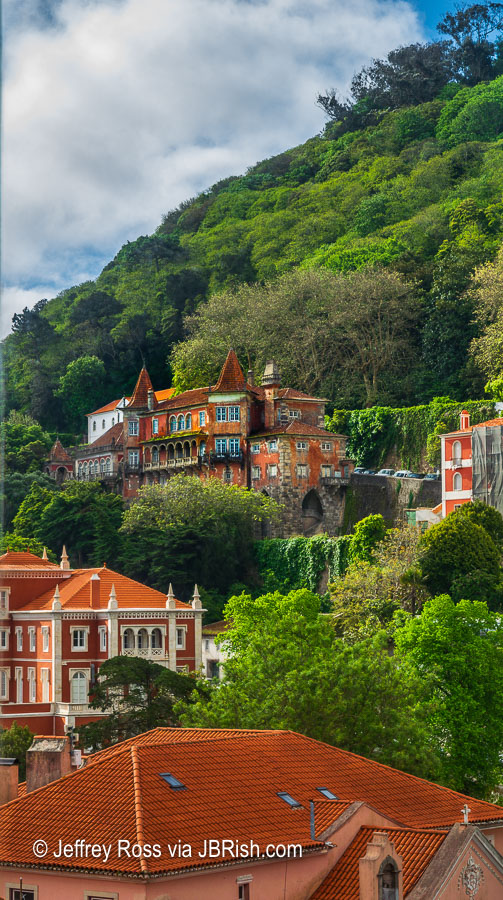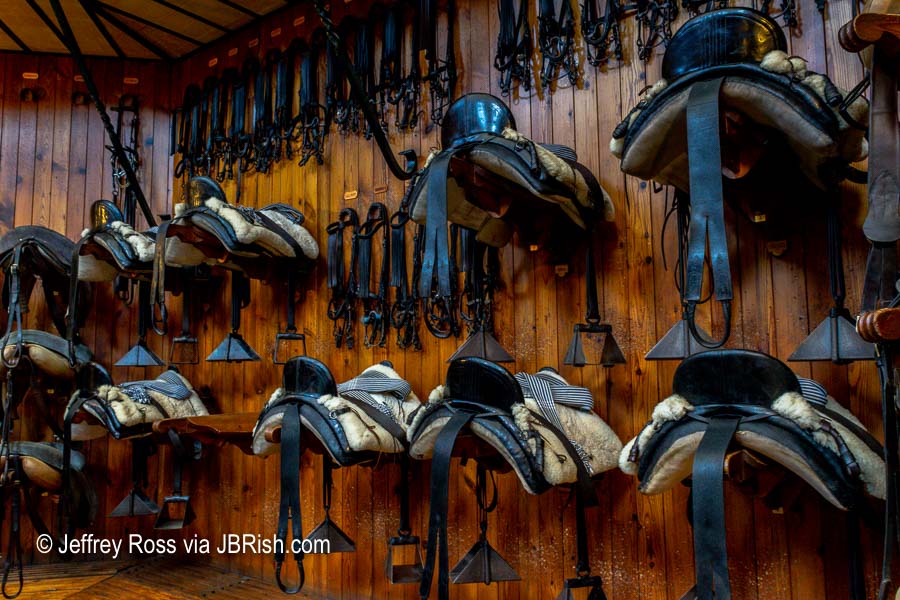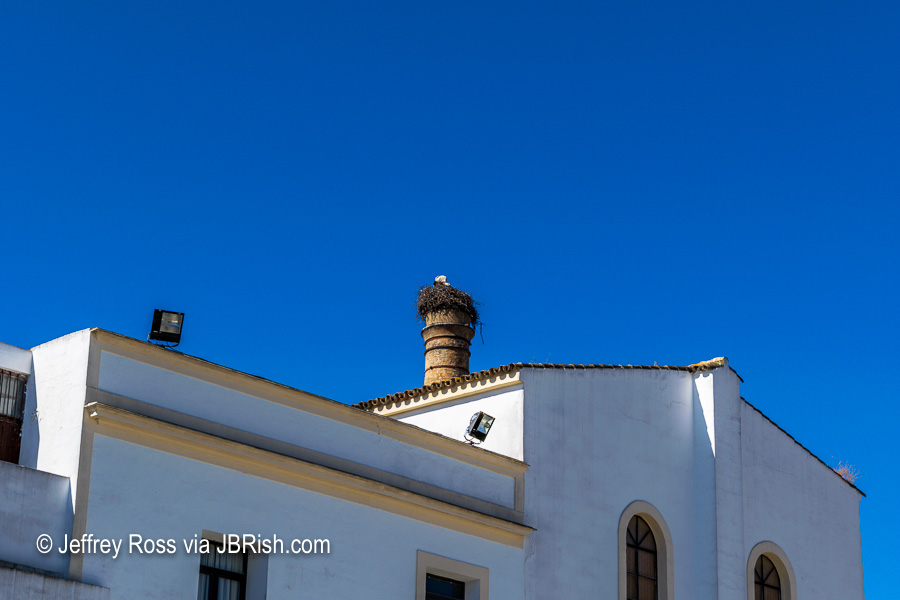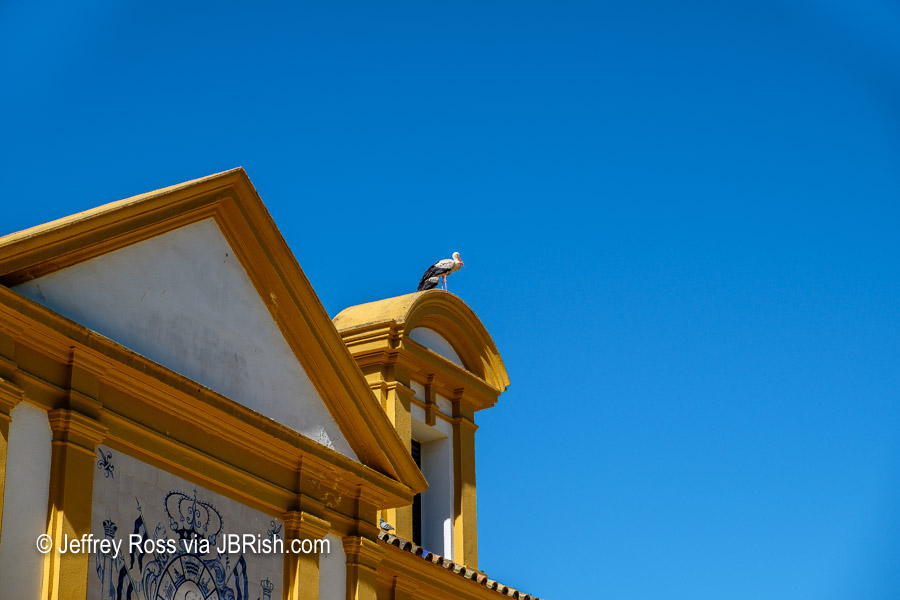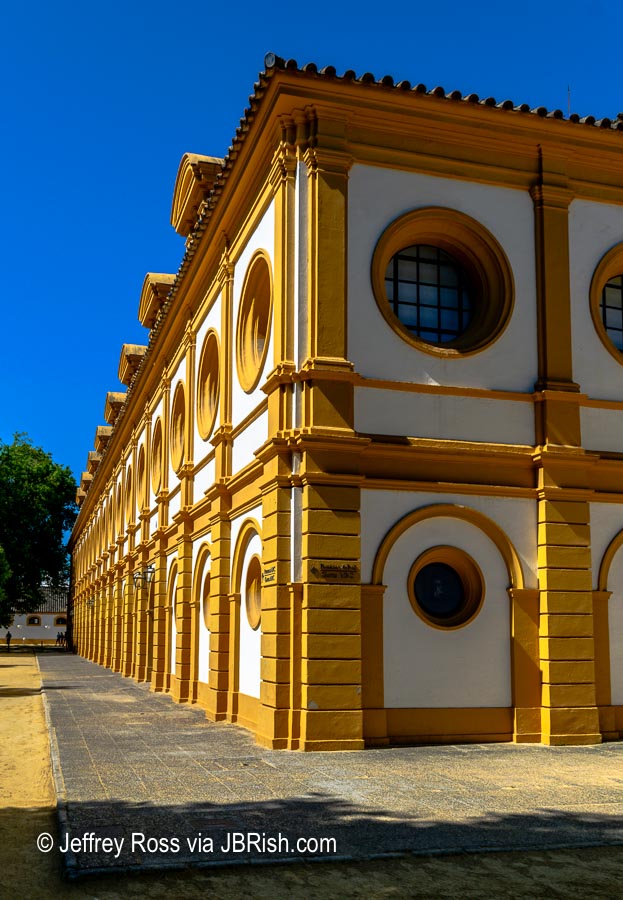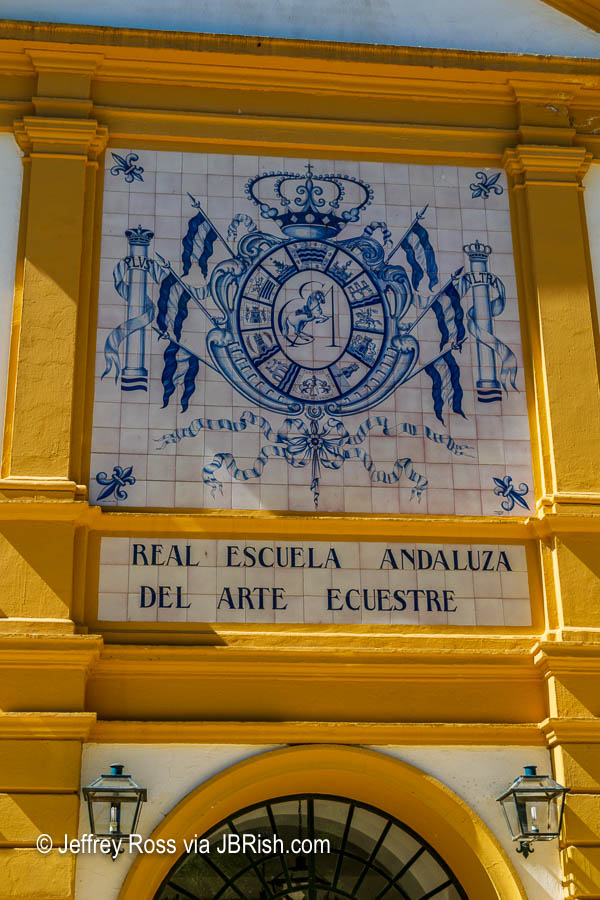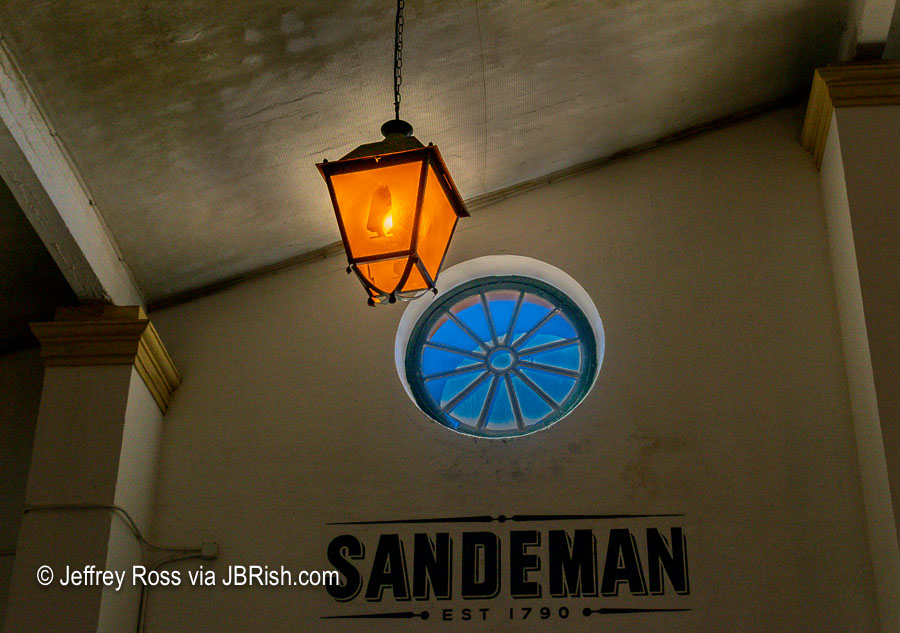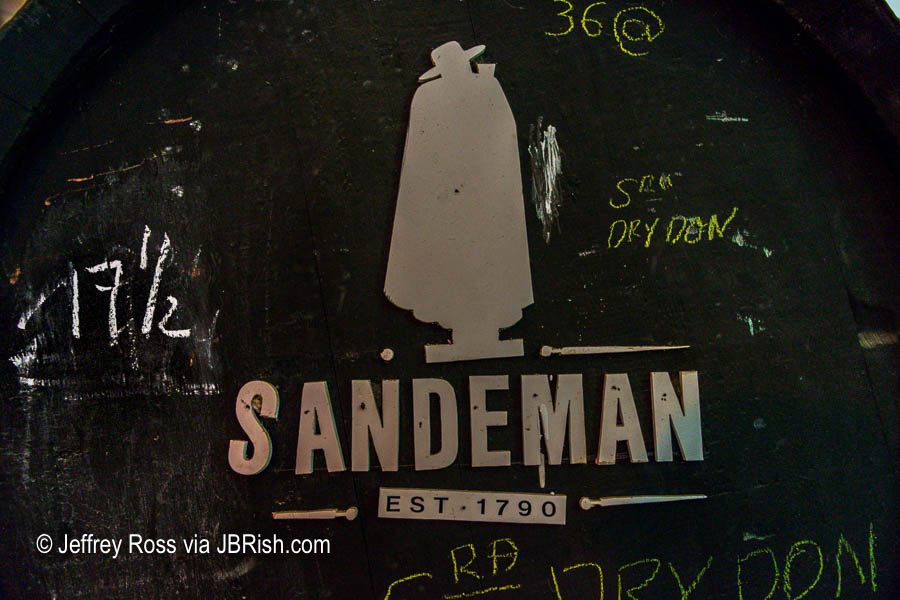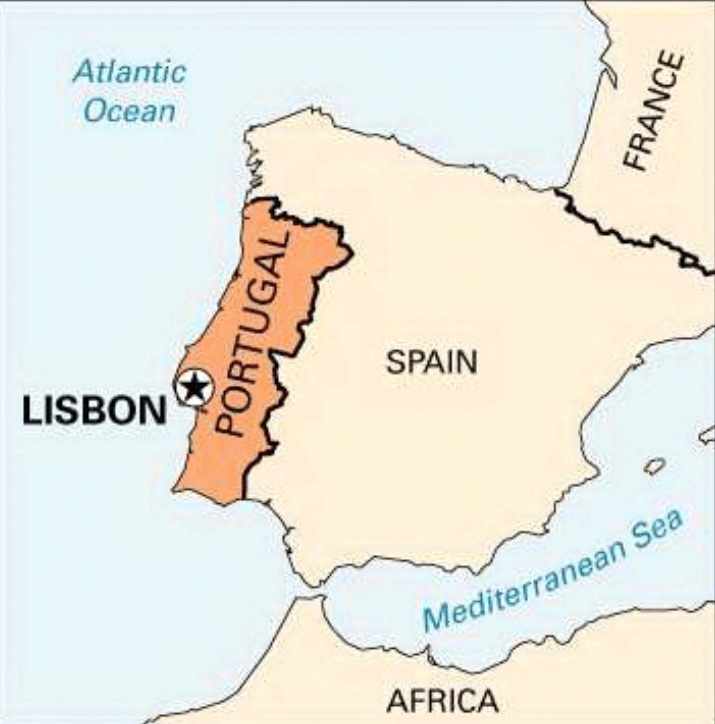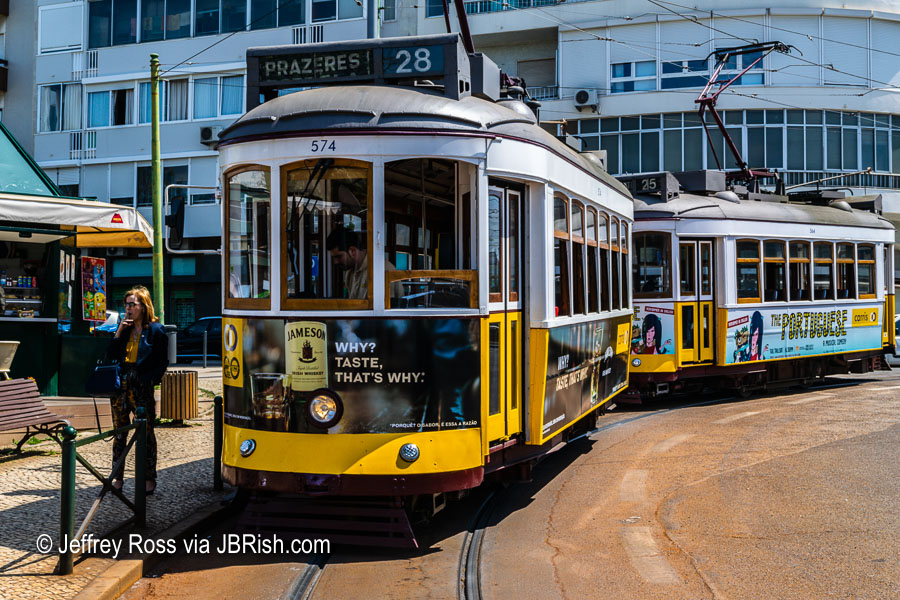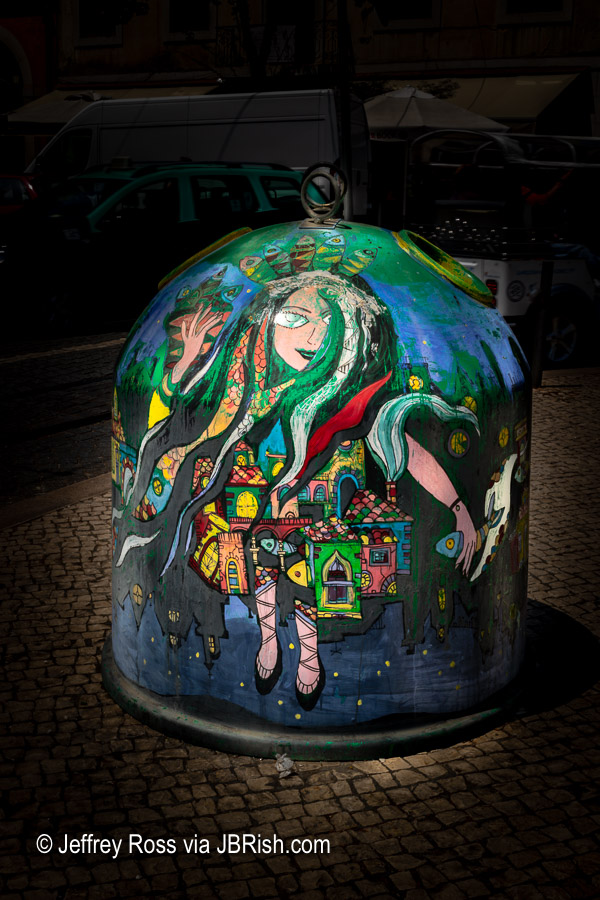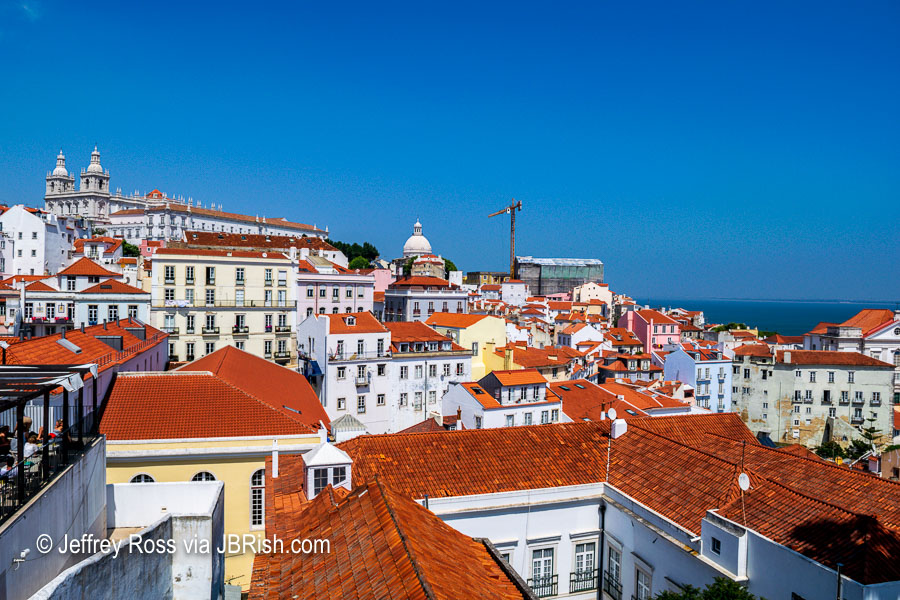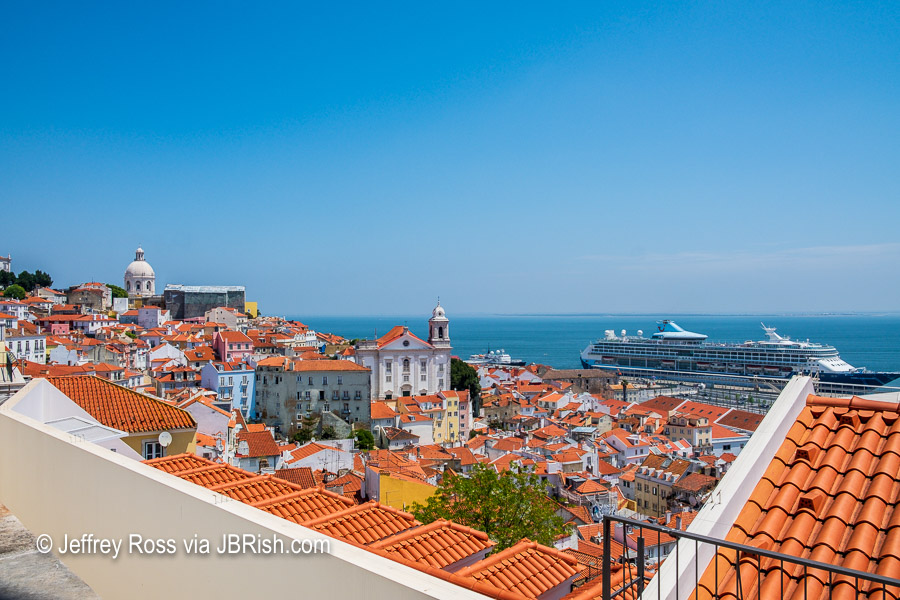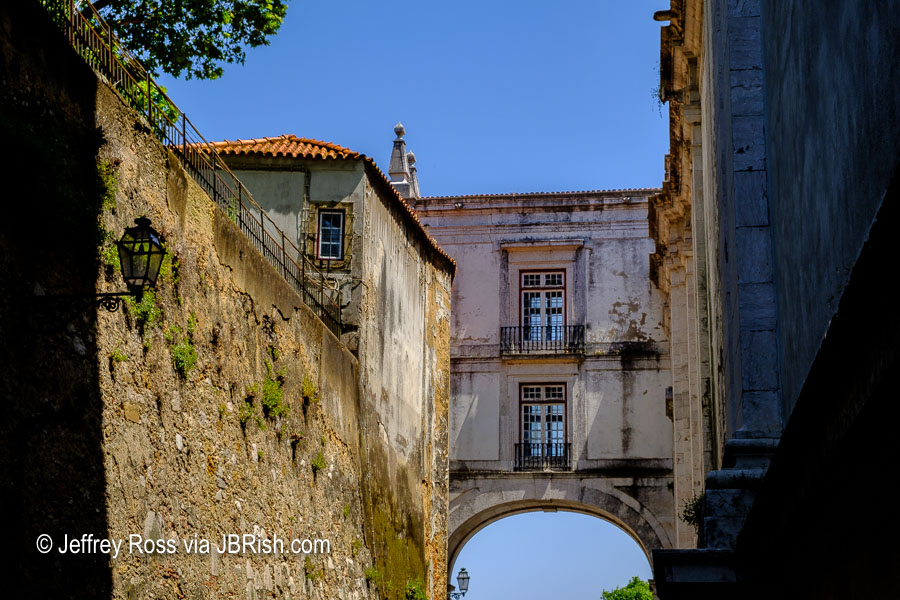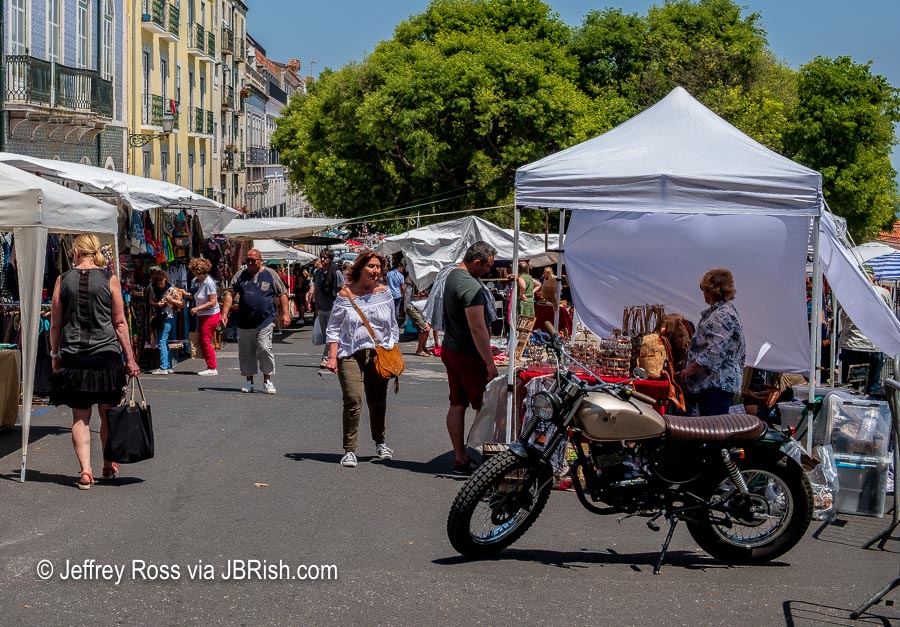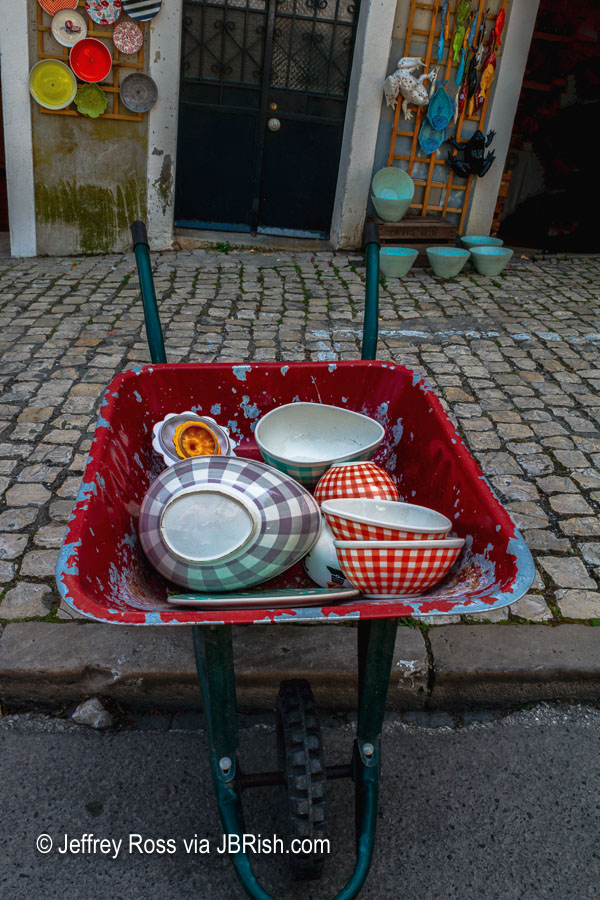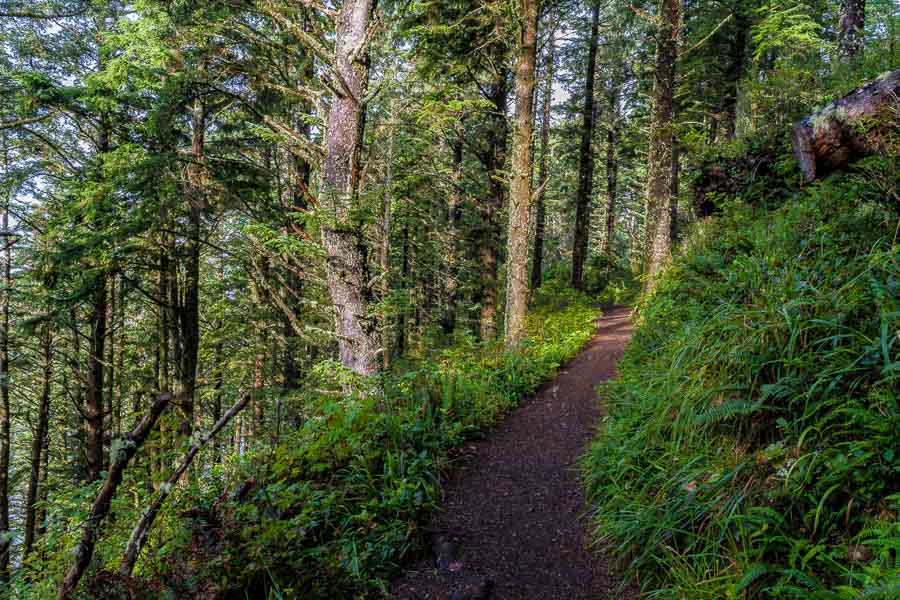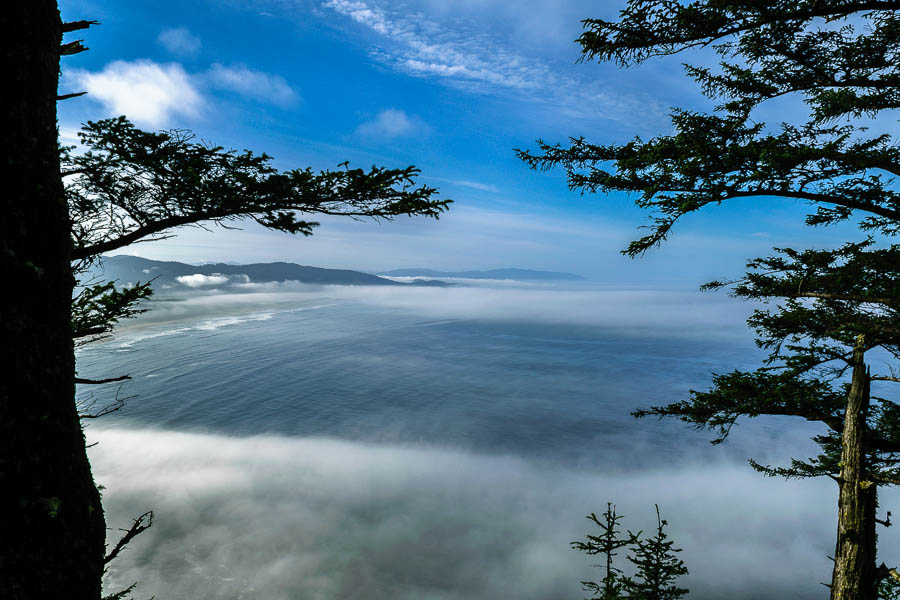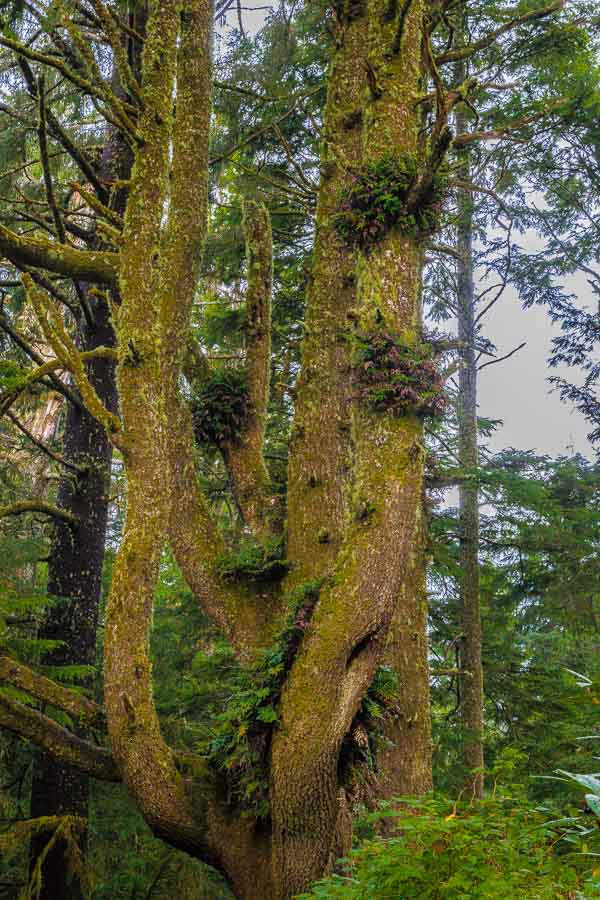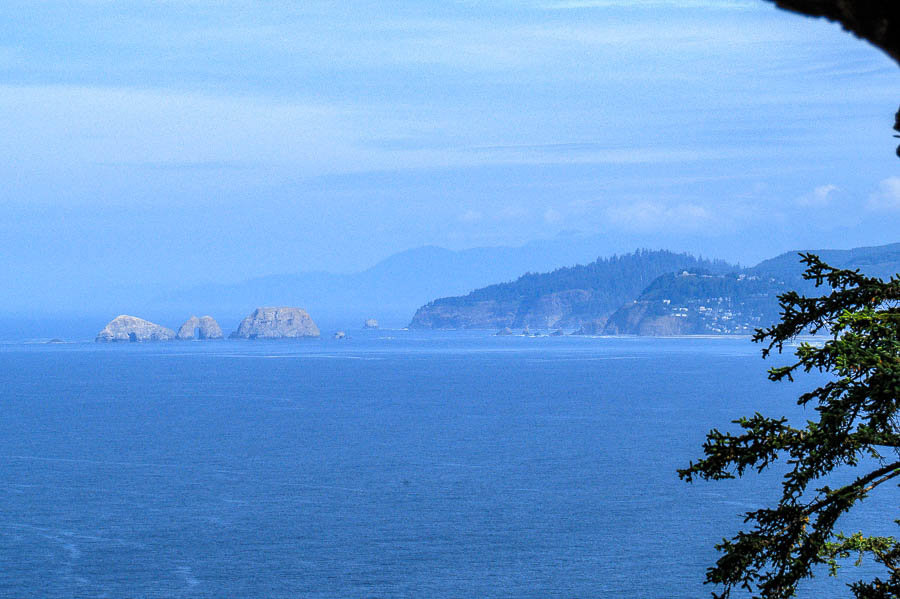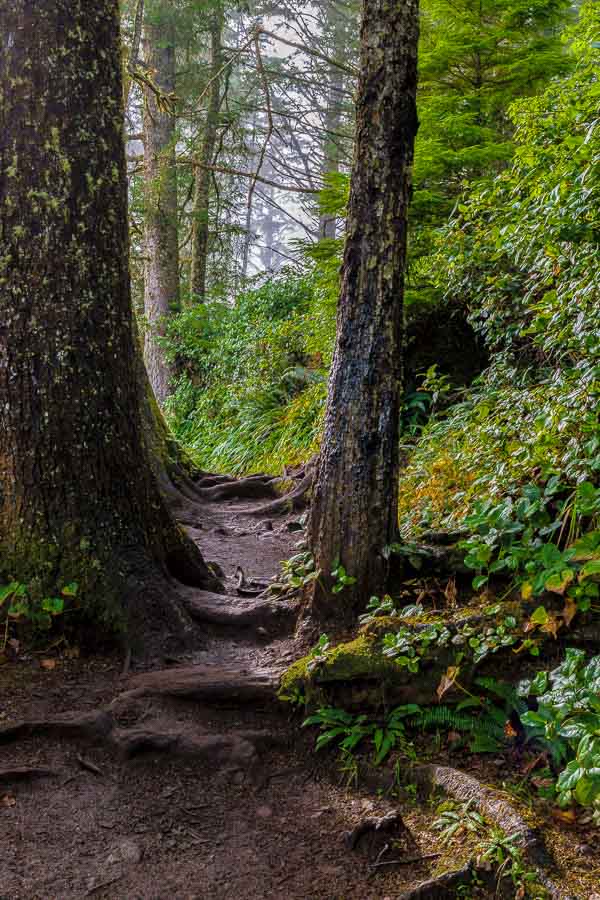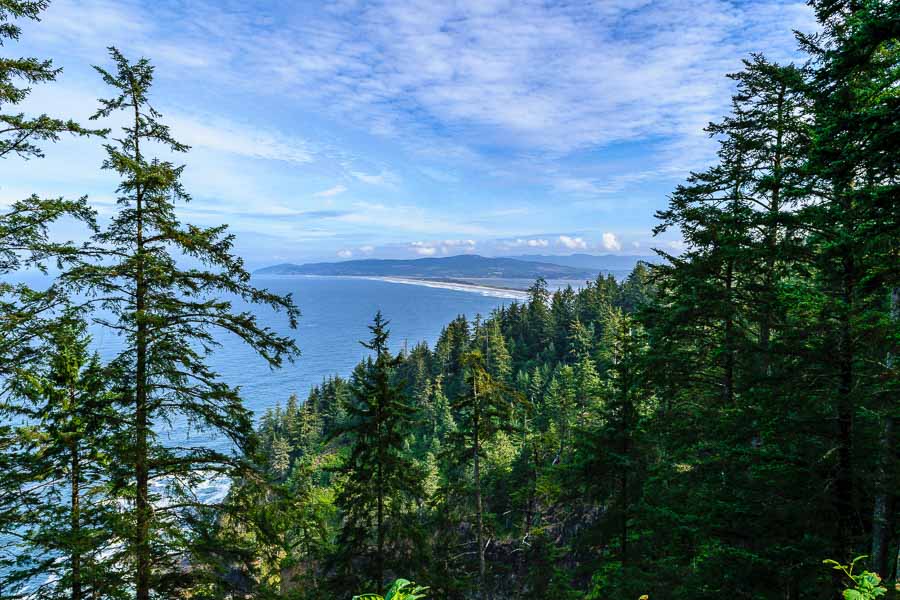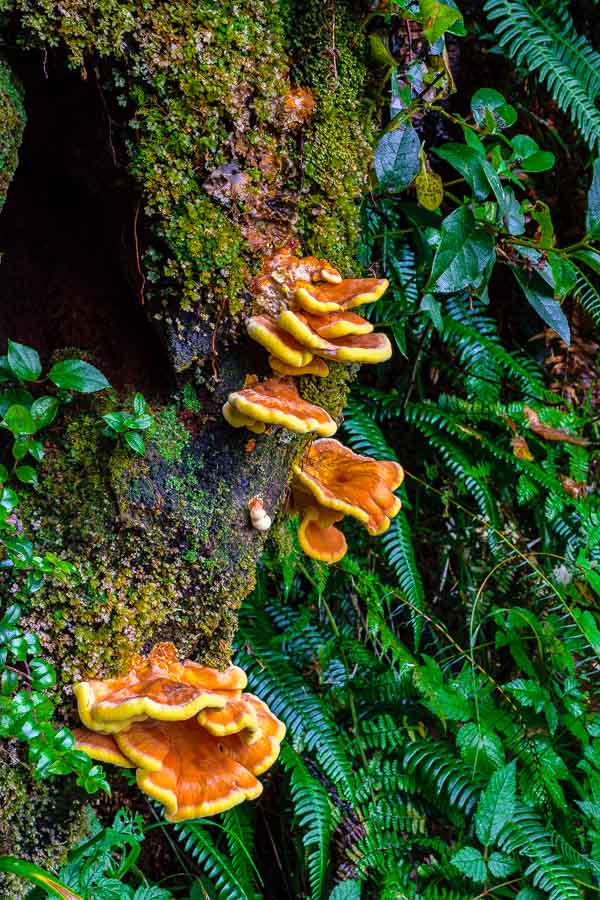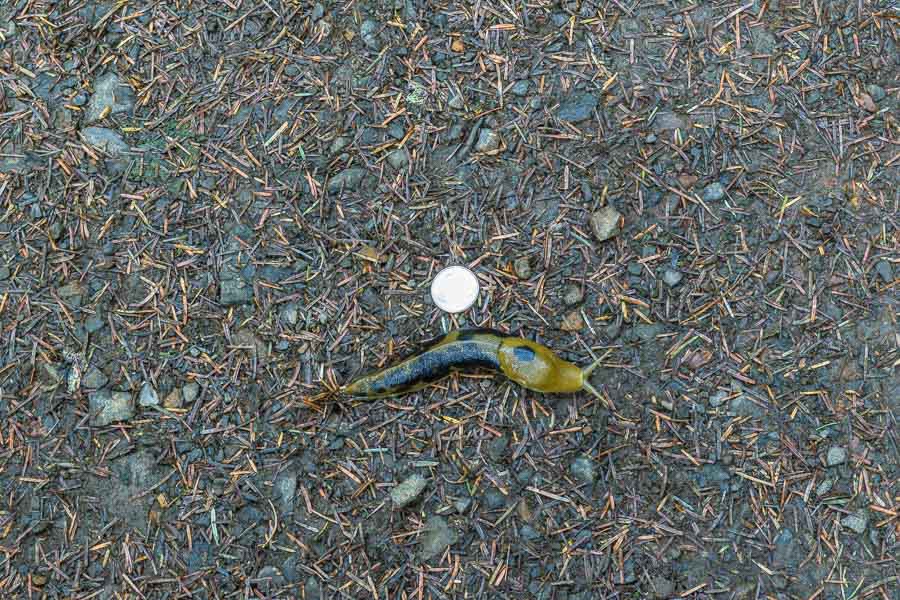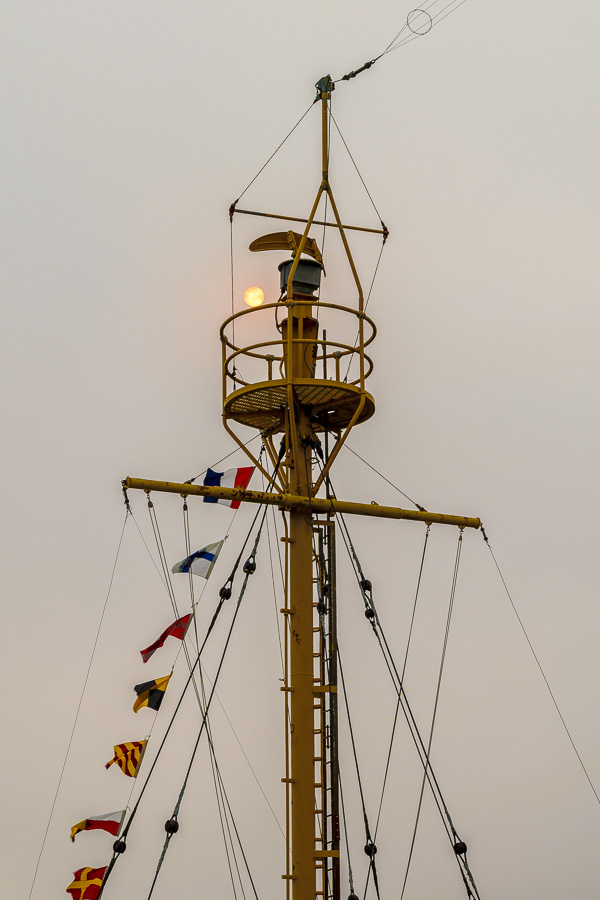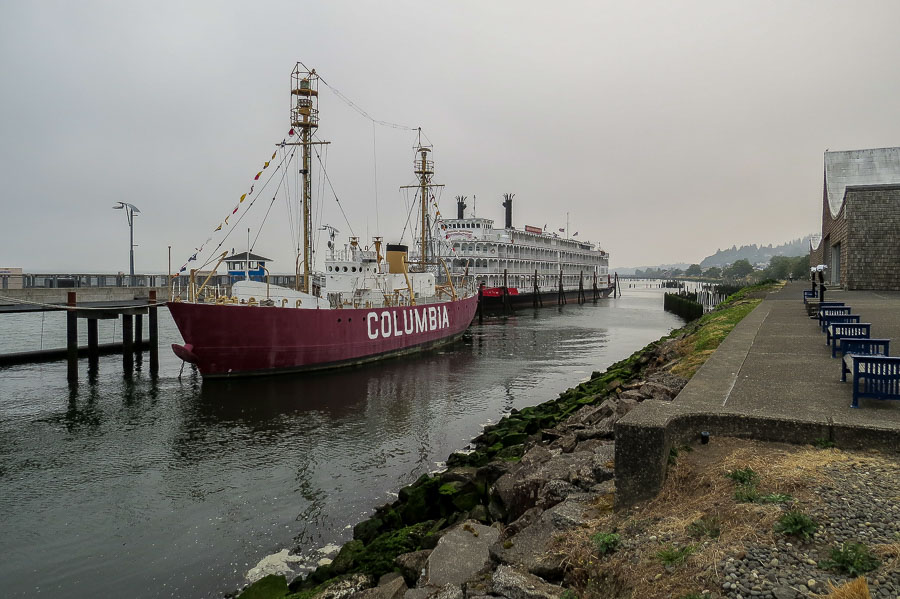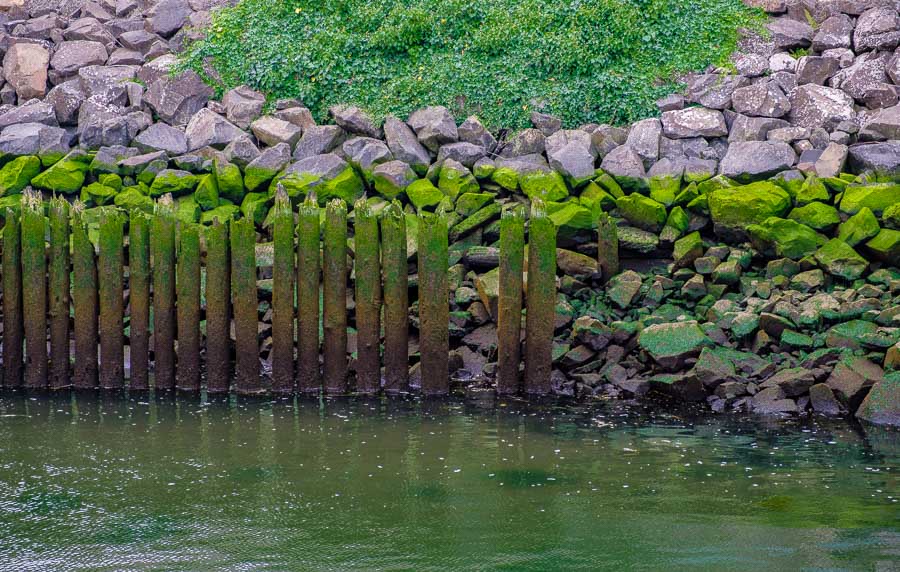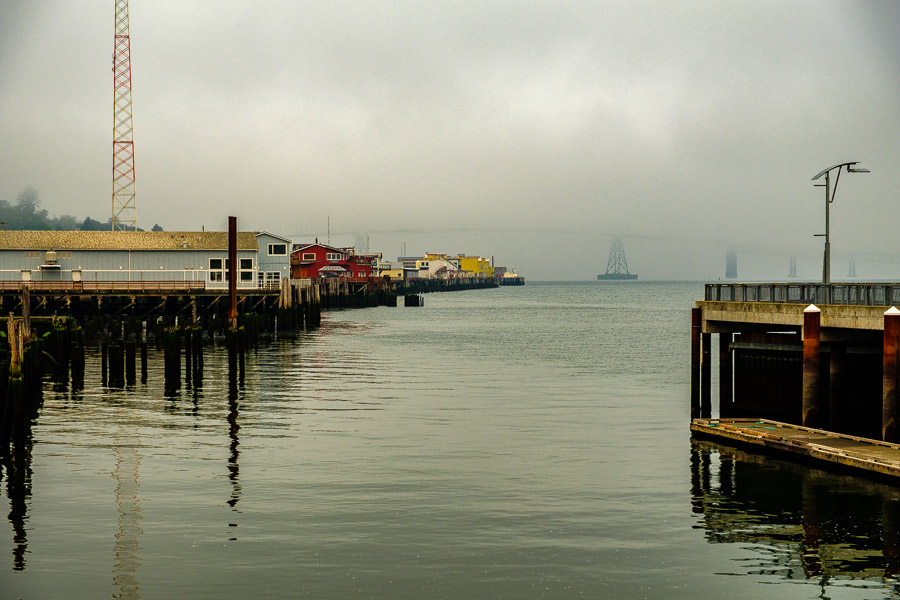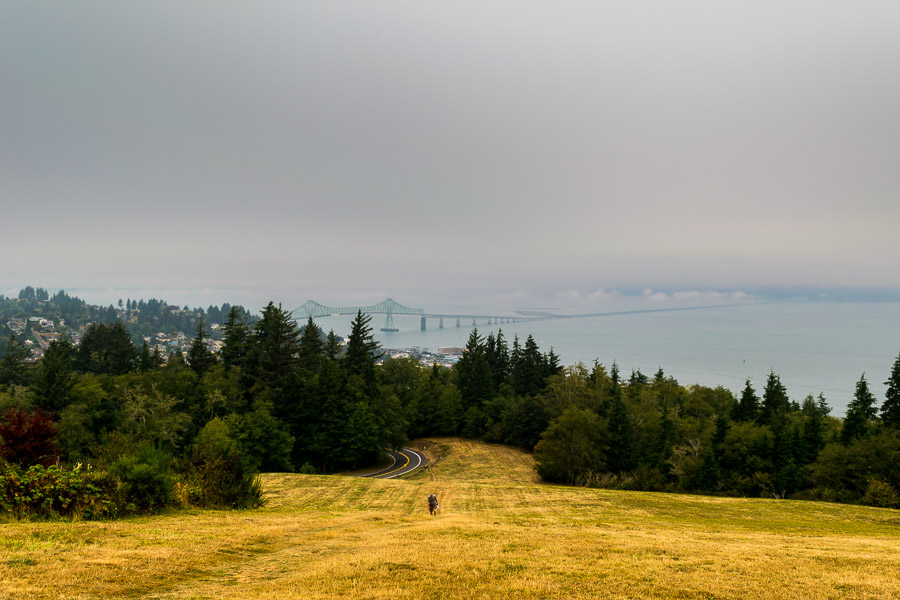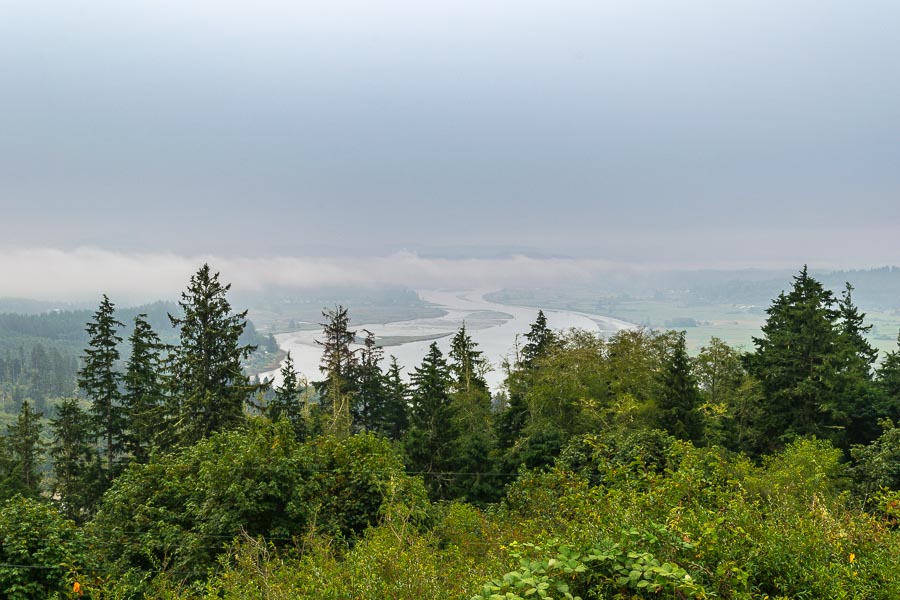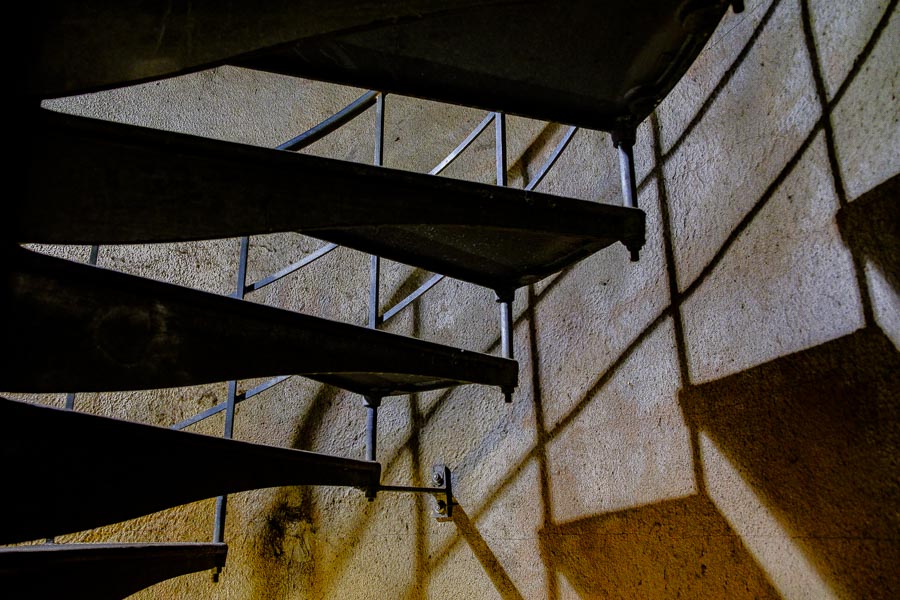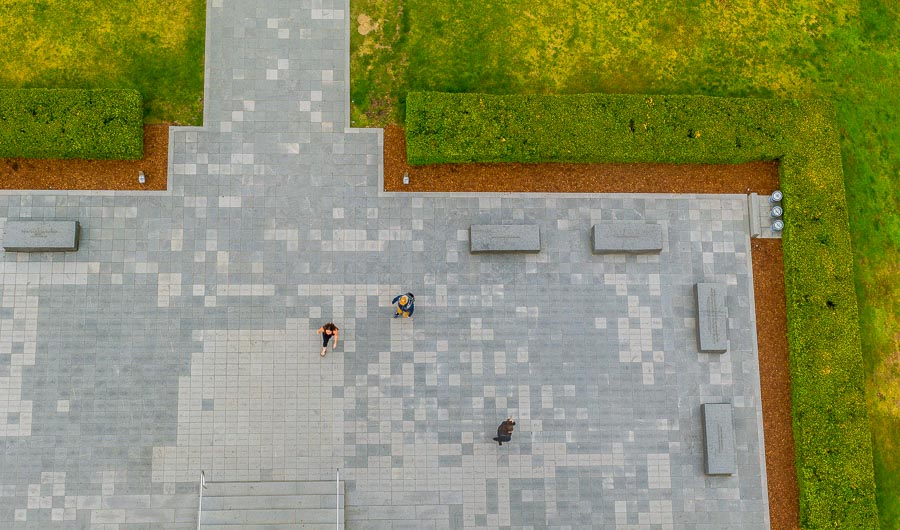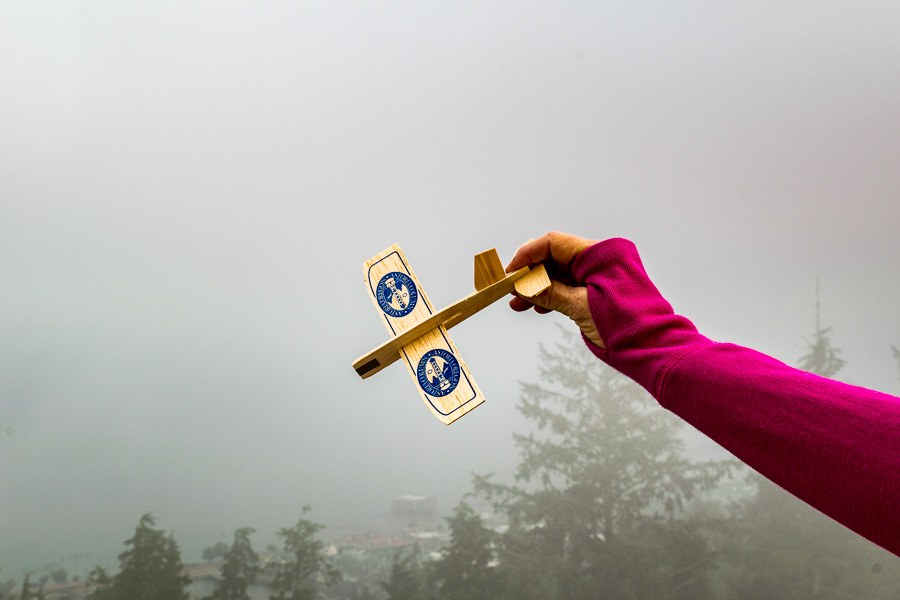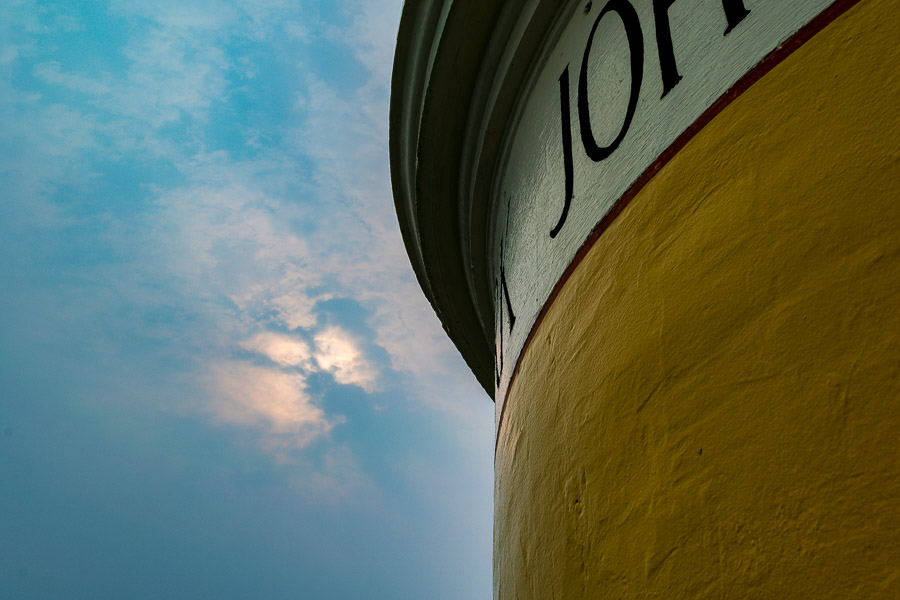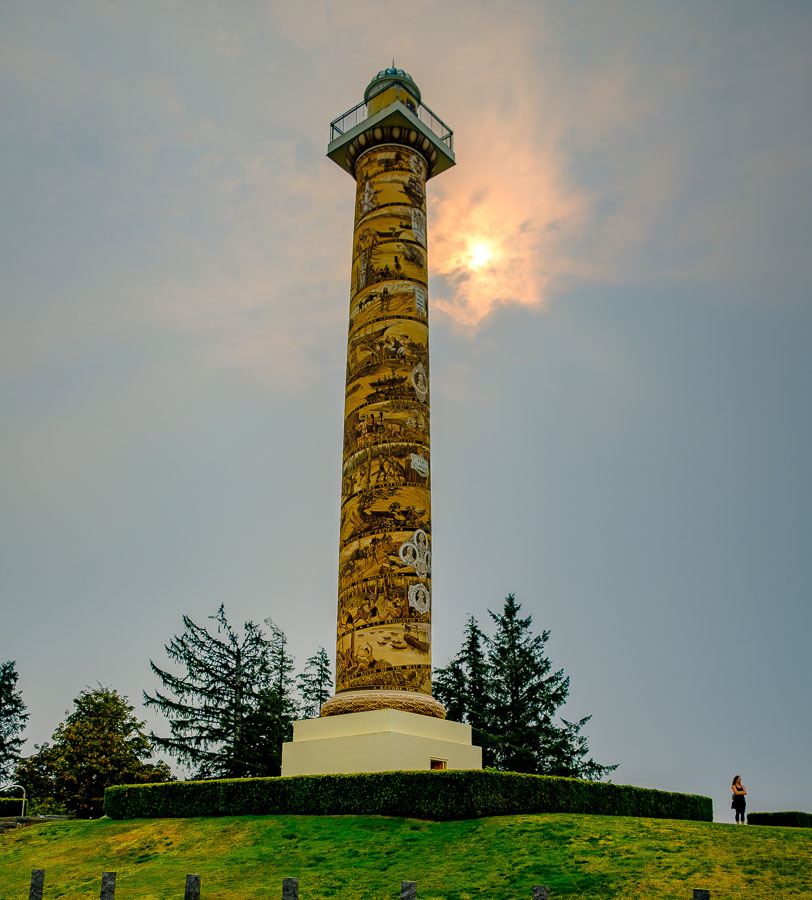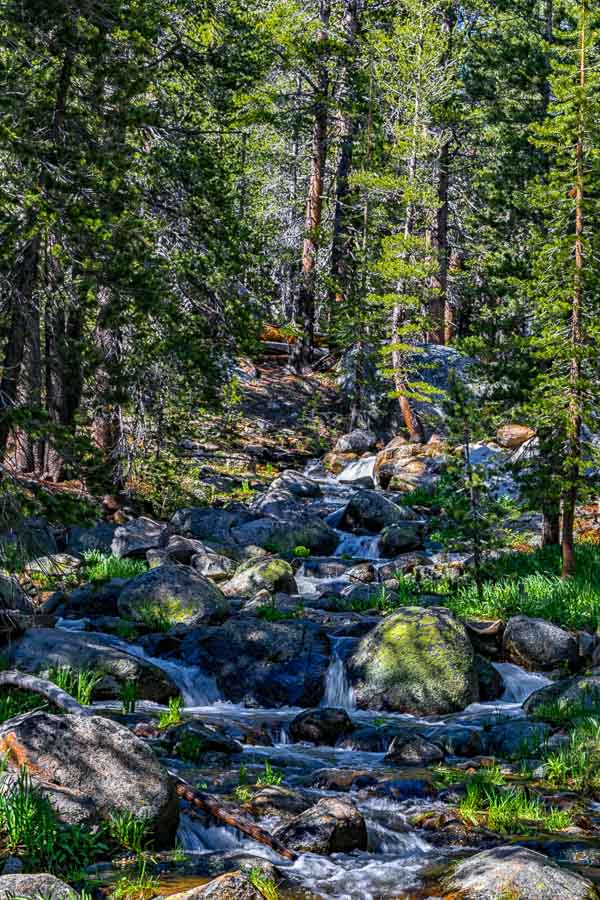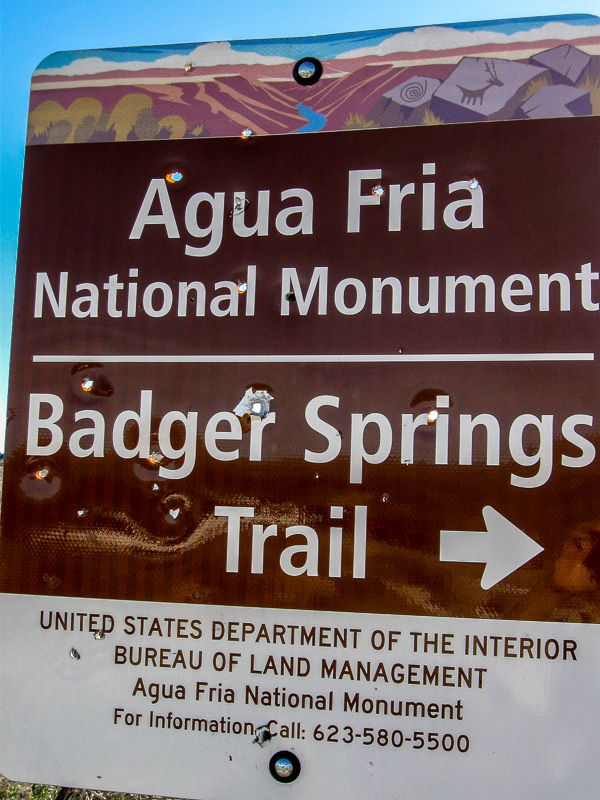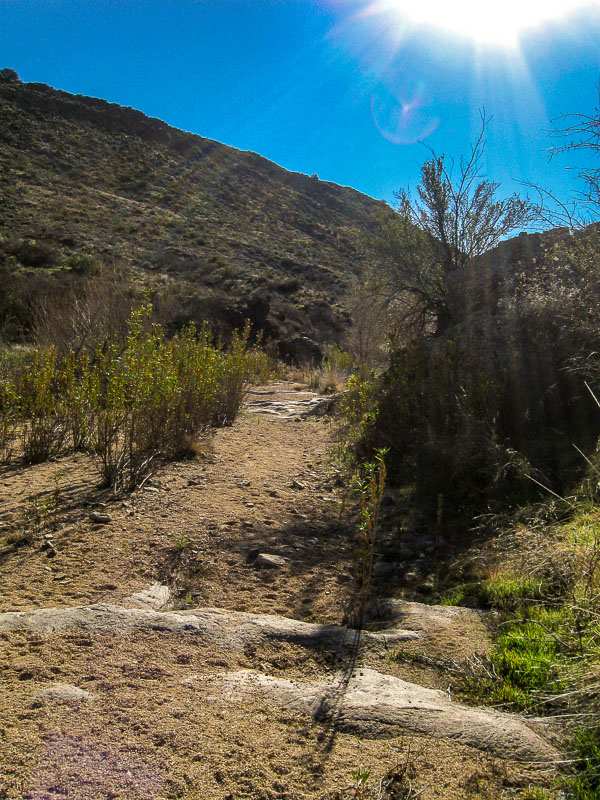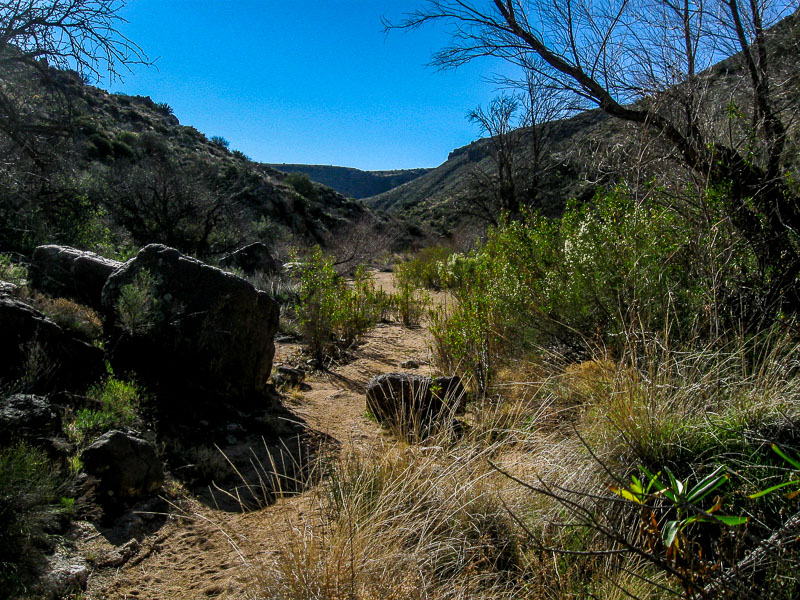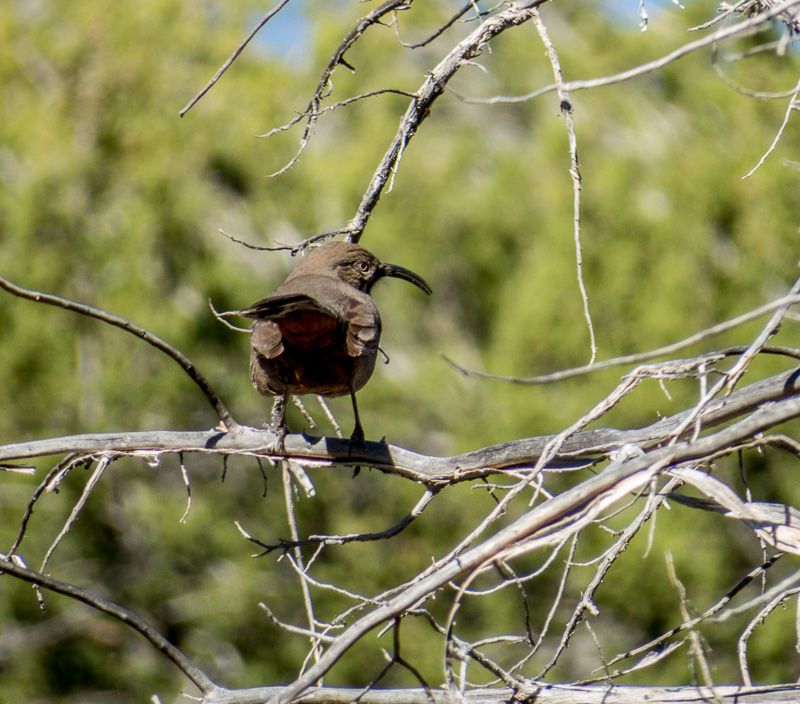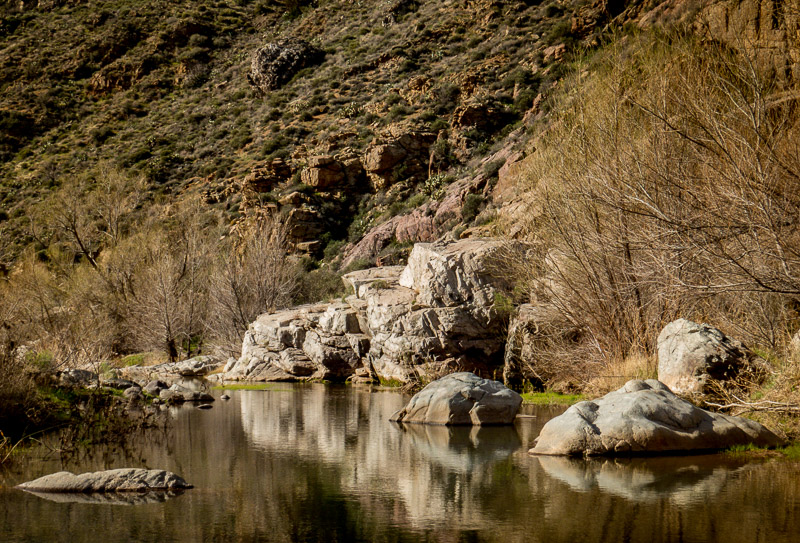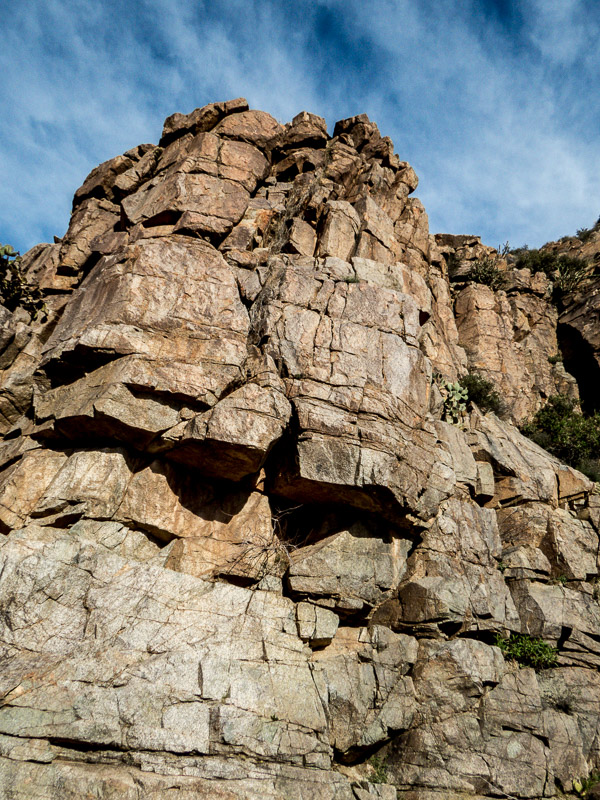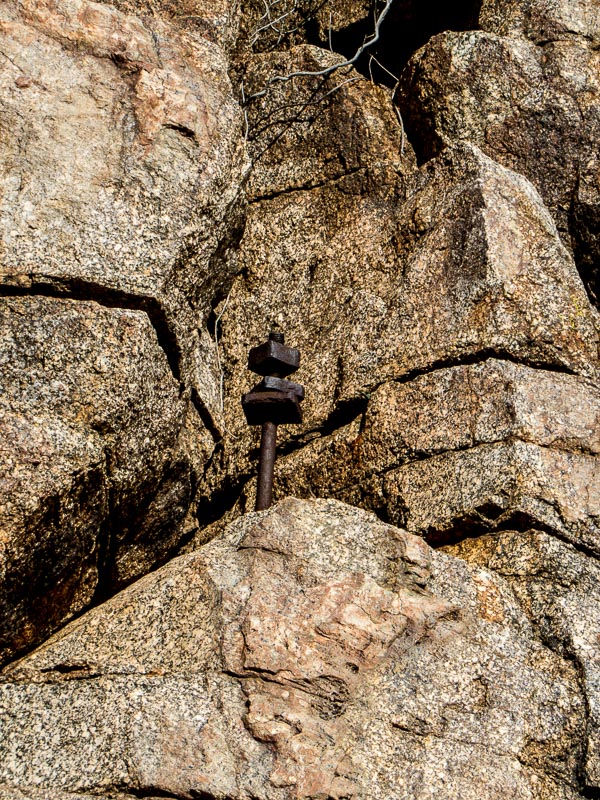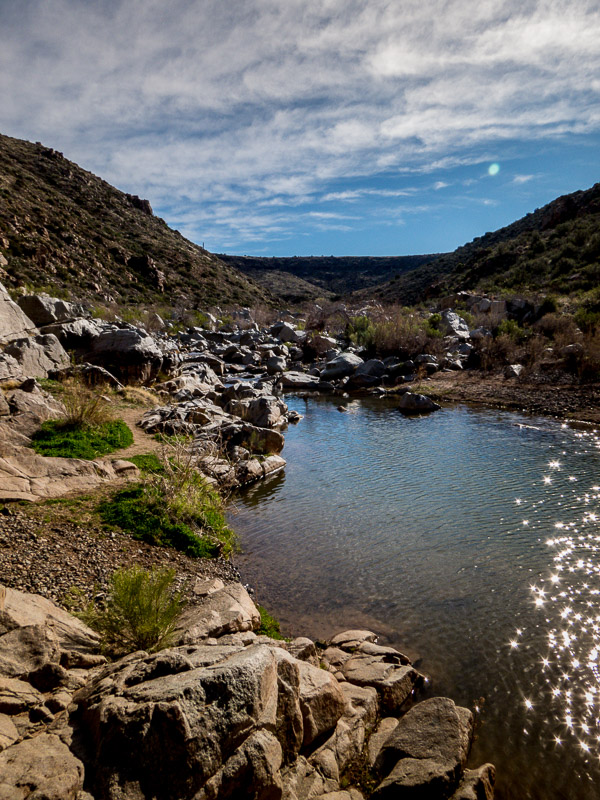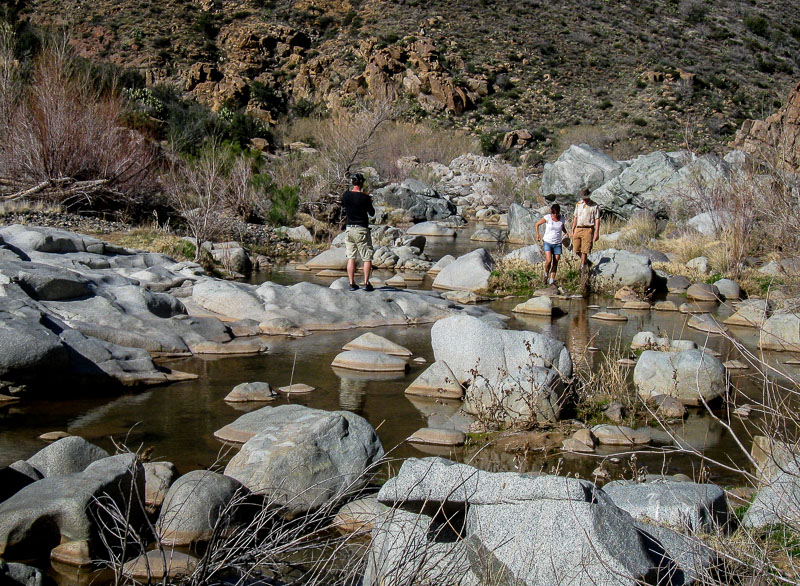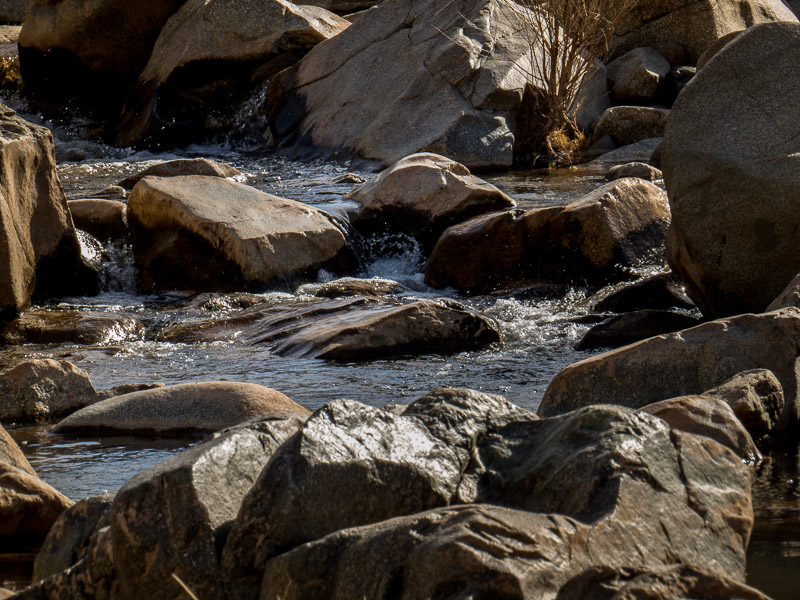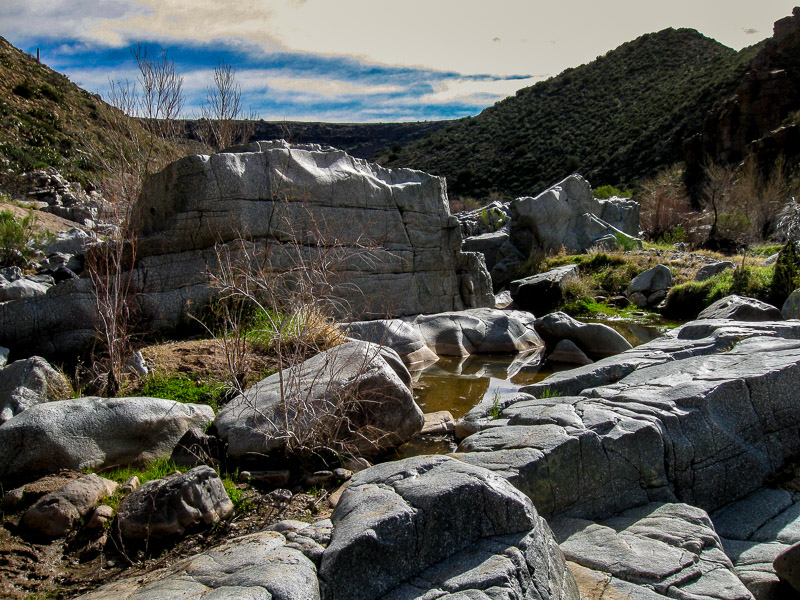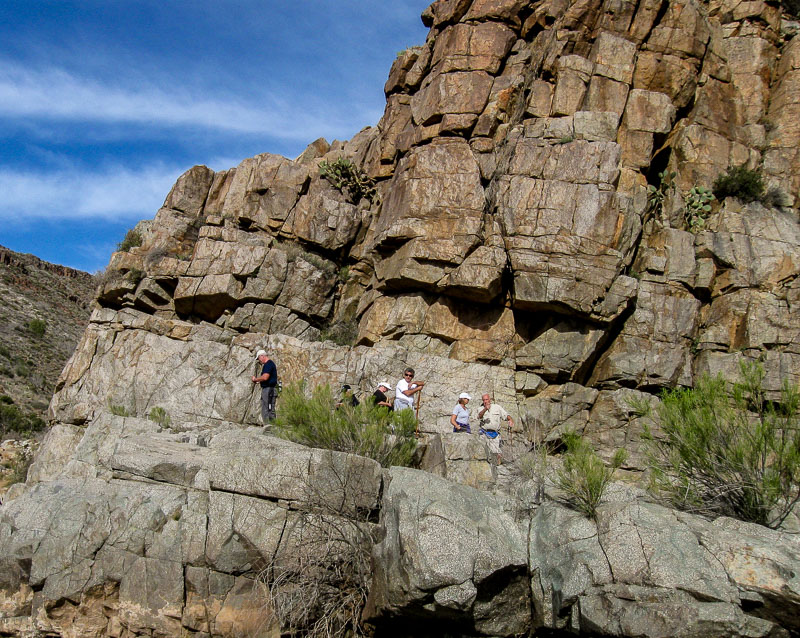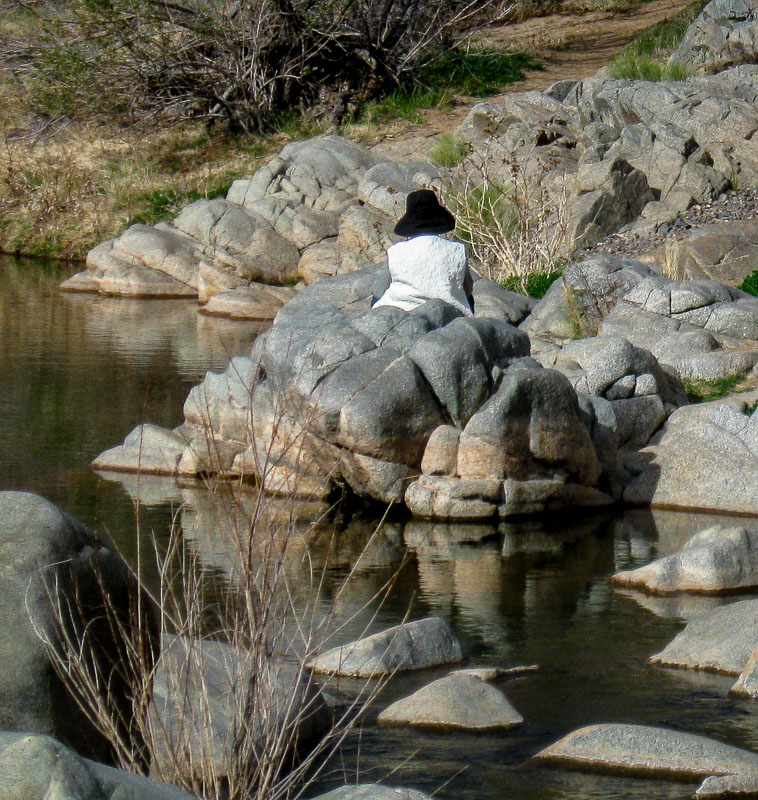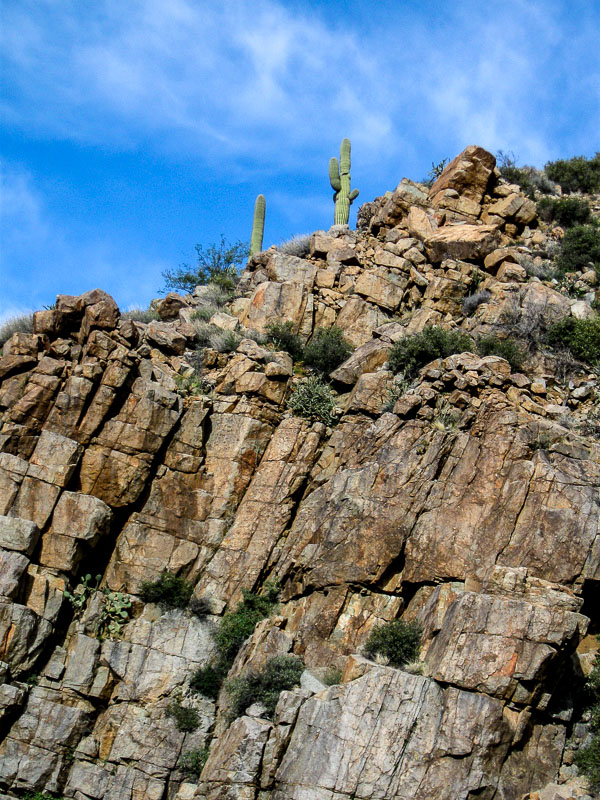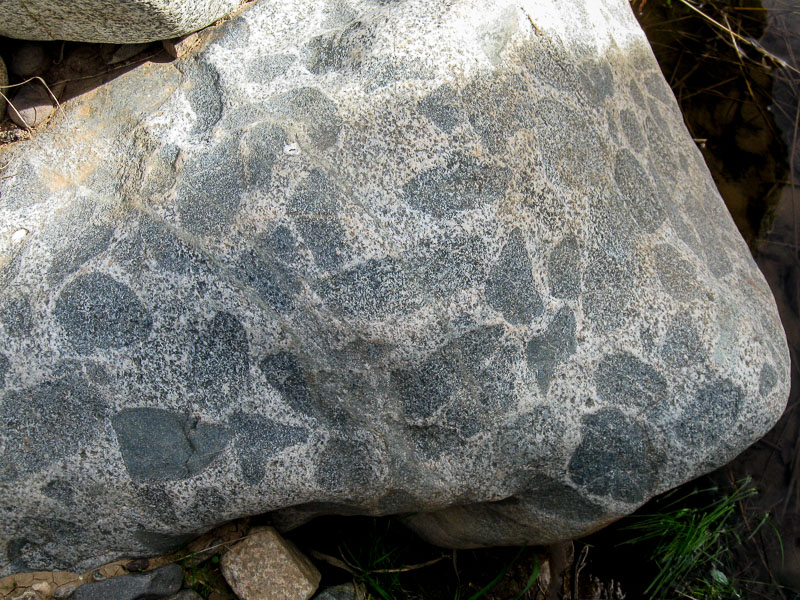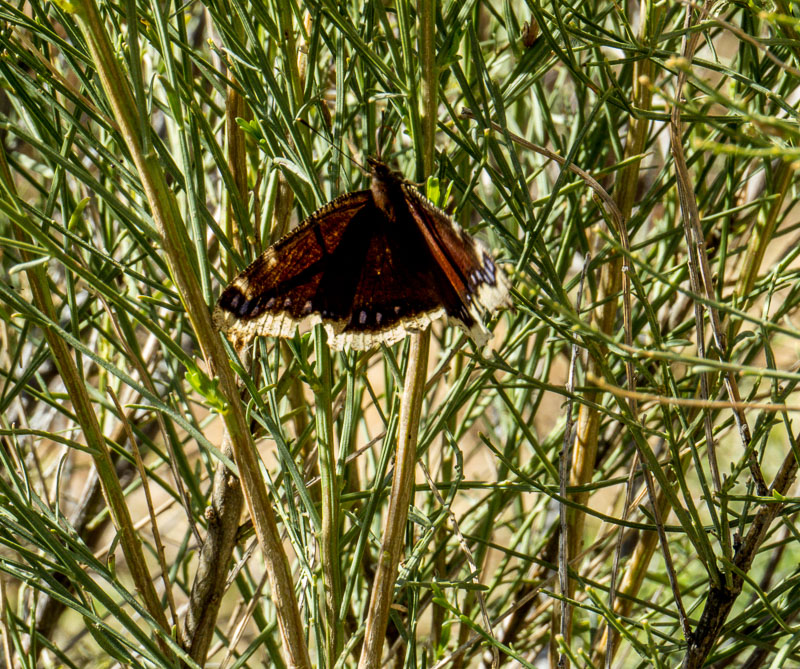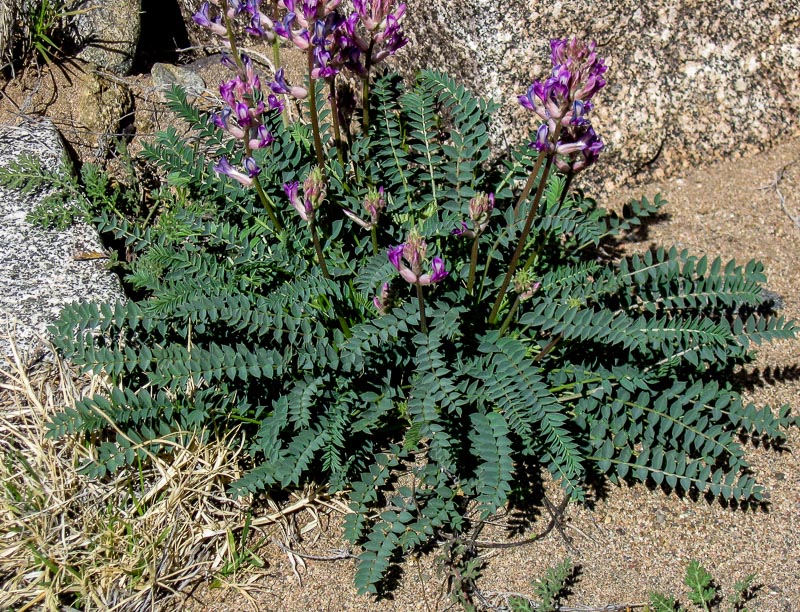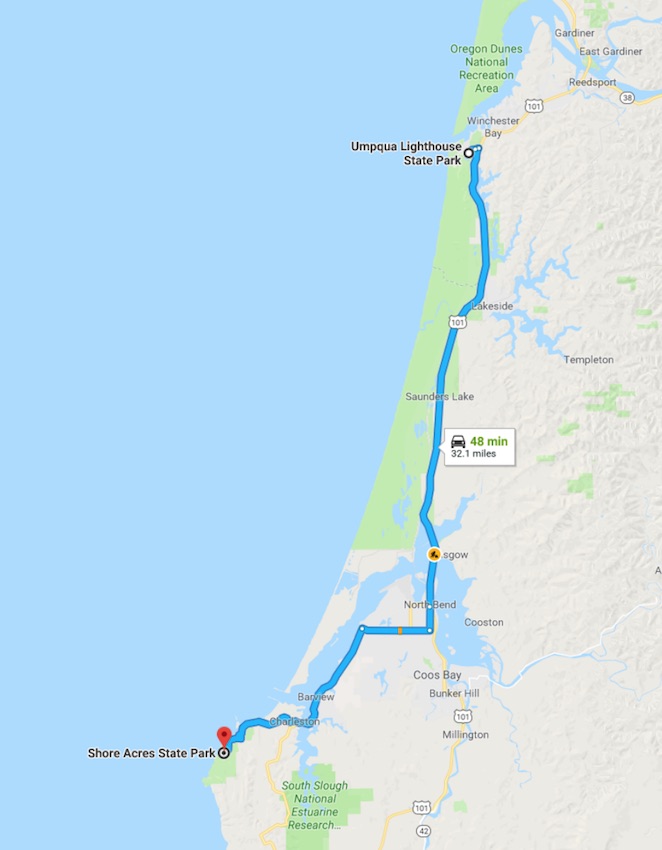
As anticipated when traveling along a nation’s coastline, one is likely to find a number of lighthouses. Although technology has rendered them less important than in the past, the lure of the sea and the mystique that accompanies them gives lighthouses a certain panache.
I am as much of a sucker for this type of thing as the next person and was therefore anxious to see the lighthouse at Umpqua Lighthouse State Park.

This was one stop, however that was somewhat disappointing because the lighthouse was not open to the public. It was fenced in and surrounded by houses. While it had all of the requisite characteristics of other lighthouses…
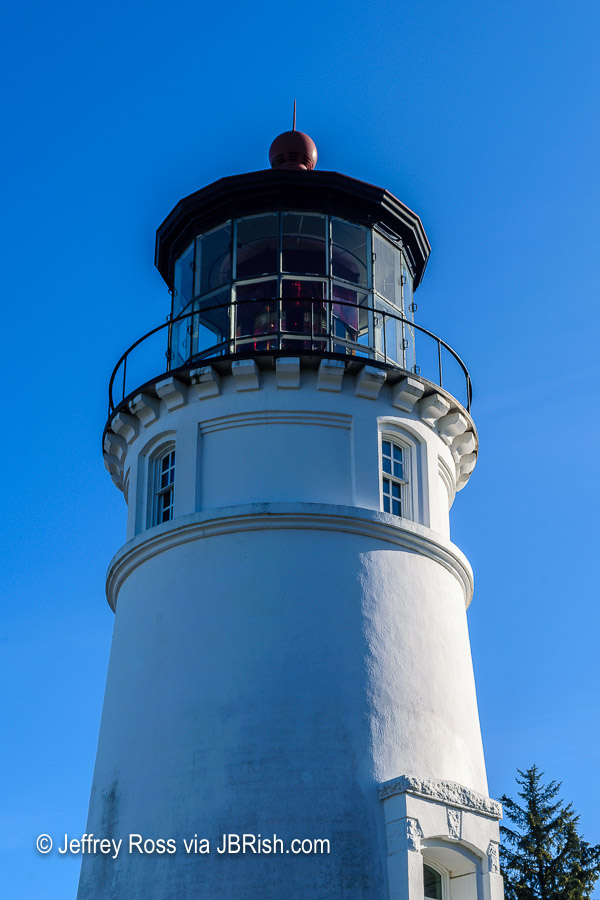
it was not as picturesque or architecturally engaging as others we had seen.
The Umpqua Lighthouse State Park had much more to offer than the lighthouse as we pulled into one of the main parking lots near the beach and put on our explorer’s garb. I have always liked beach combing because of some of the treasures Davy Jones tosses our way.
There was a series of jetties and one in particular seemed interesting because of this…
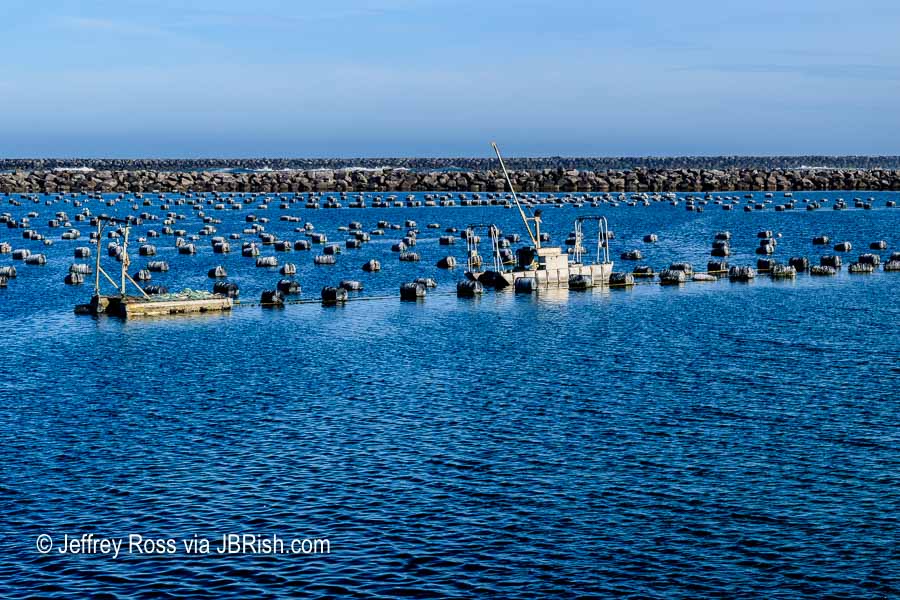
We could not discern exactly what this boat was doing in the water. It was surrounded by barrels and there was a floating platform about twenty five yards behind. The craft seemed functional, but did not give the impression it was used for seafaring adventures very often. Here’s a closer look:
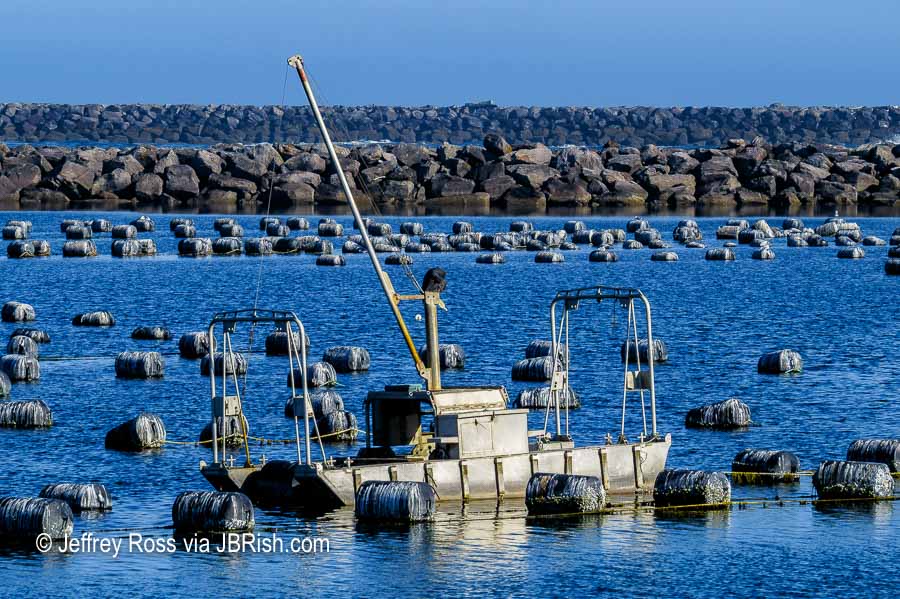
As we walked along, we appreciated that we were not the only living creatures on the beach. This set of bird tracks went zig-zaging up the rocks toward the water creating an interesting pattern.

With much to do this day, we did not linger before heading farther down the road. Sunset Bay State Park was a worthy stop. The tide was low and the colors of the water, surrounding rocks and trees were picture-pretty.
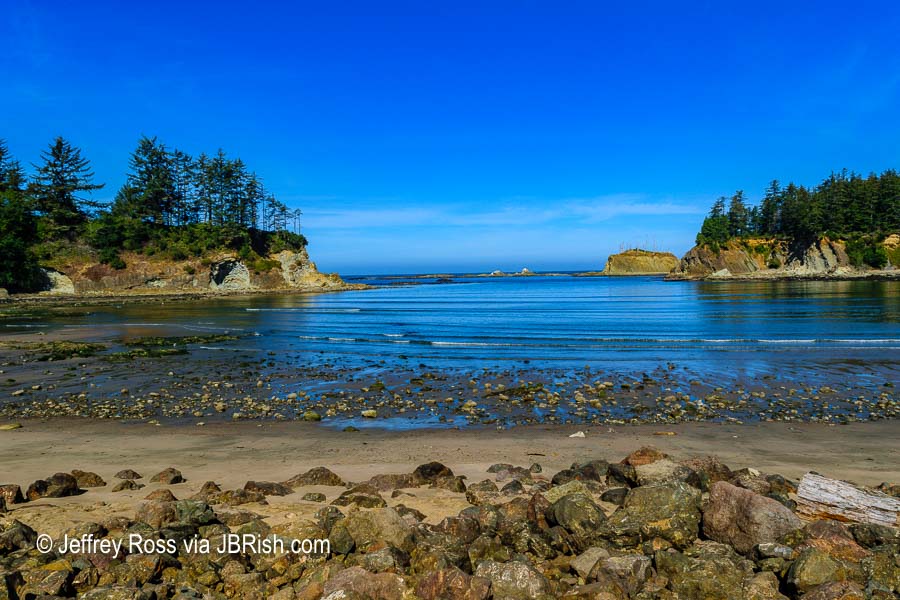
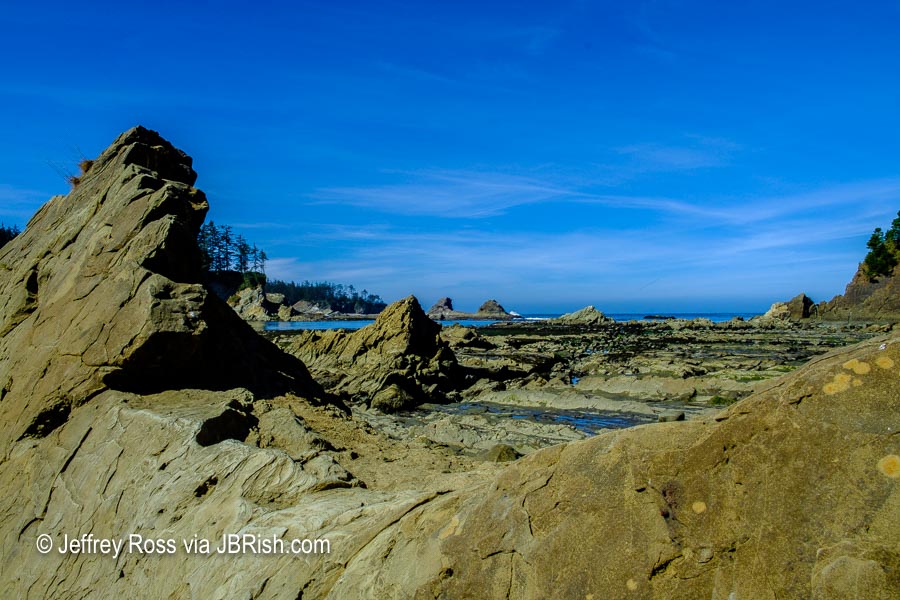
We read about yet another lighhouse at Cape Arago near Charleston and were once again tempted to stop and capture some photographs. These were all from a distance as we could not get close to the building.
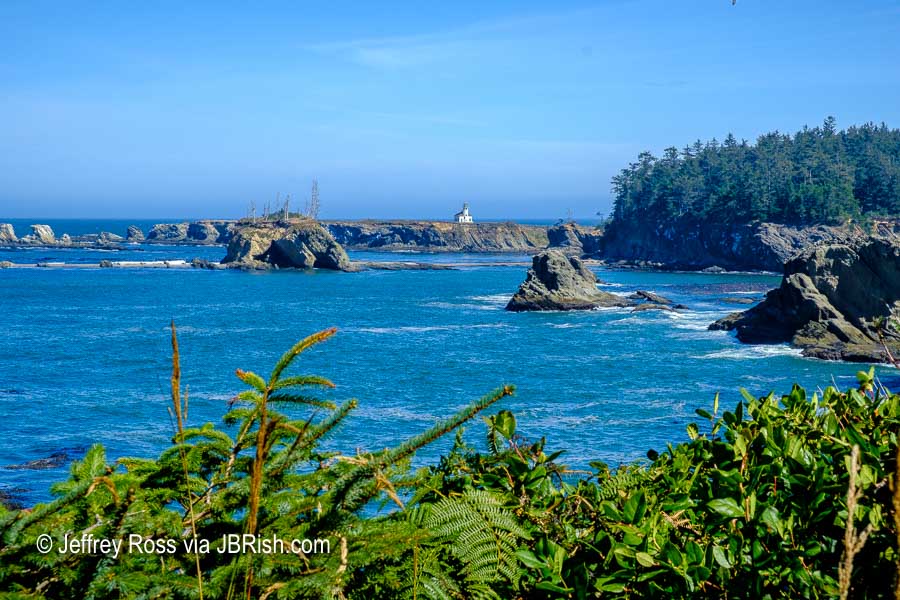
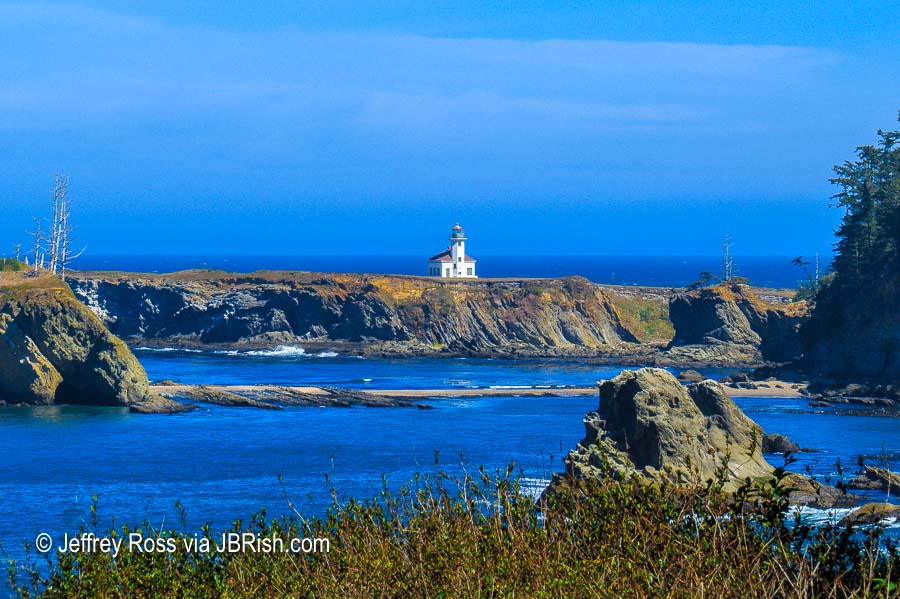

This was a beautiful day. The sky was blue with wispy clouds and a soft breeze. After a number of days of mist and rain, the sun was most welcome. The seaside offered wonderful views of the Pacific Ocean.
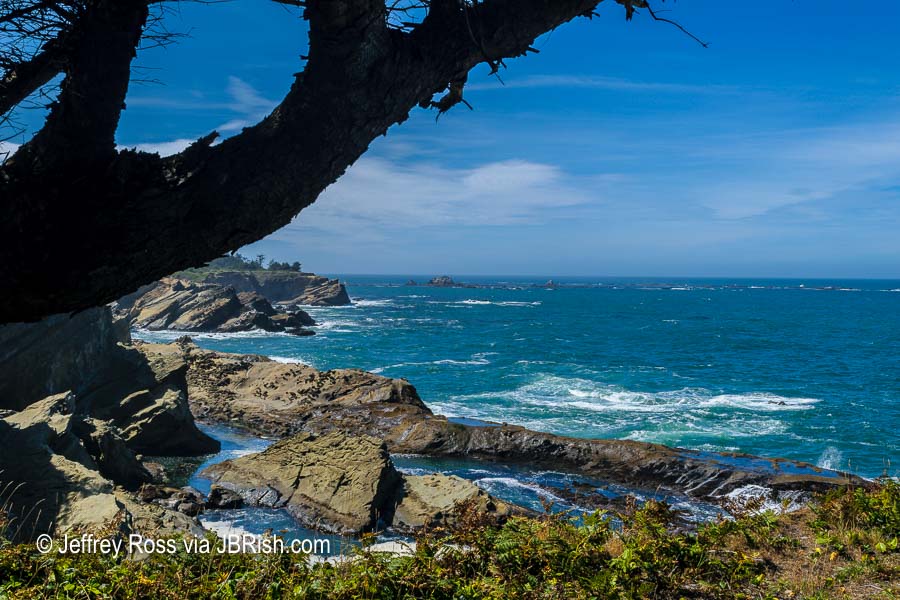
Anyone who spends a bit of time reading posts on JBRish.com, knows that I like gardening and I enjoy flowers. If you also appreciate plants, gardens and beautifully arranged formal garden settings, I would encourage you to stop and spend time at Shore Acres State Park garden near Coos Bay, OR.
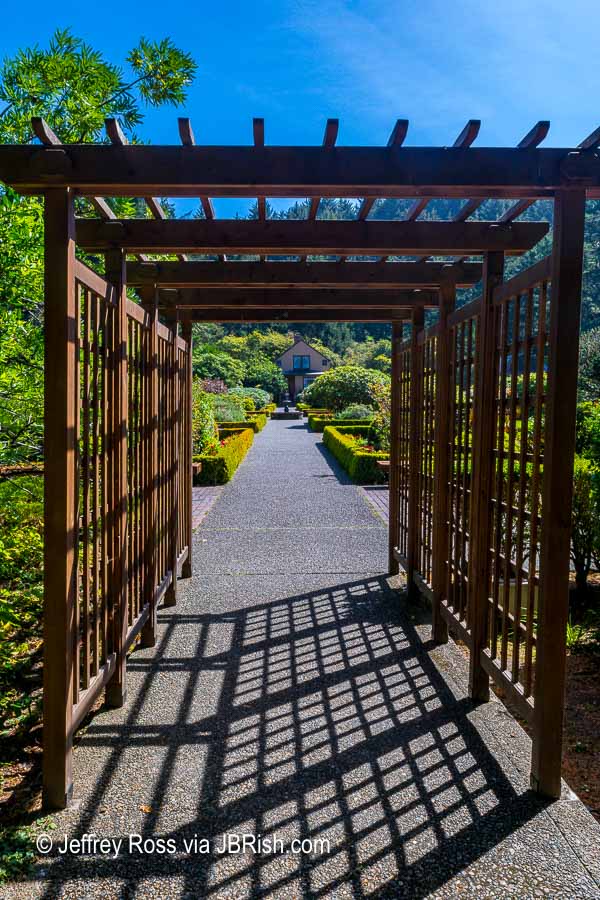

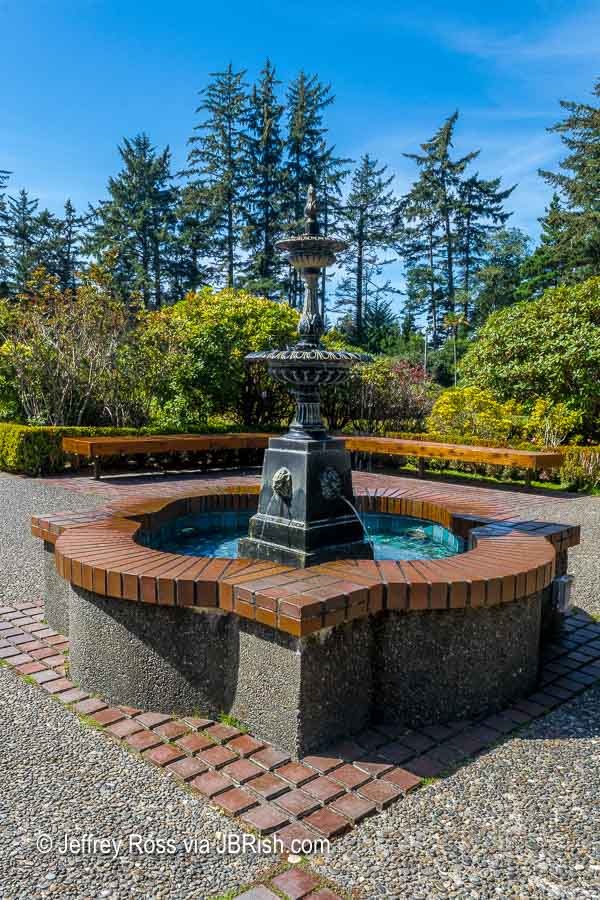
This display of Rudbeckias, which we grew in New Jersey, was thick and dazzling.
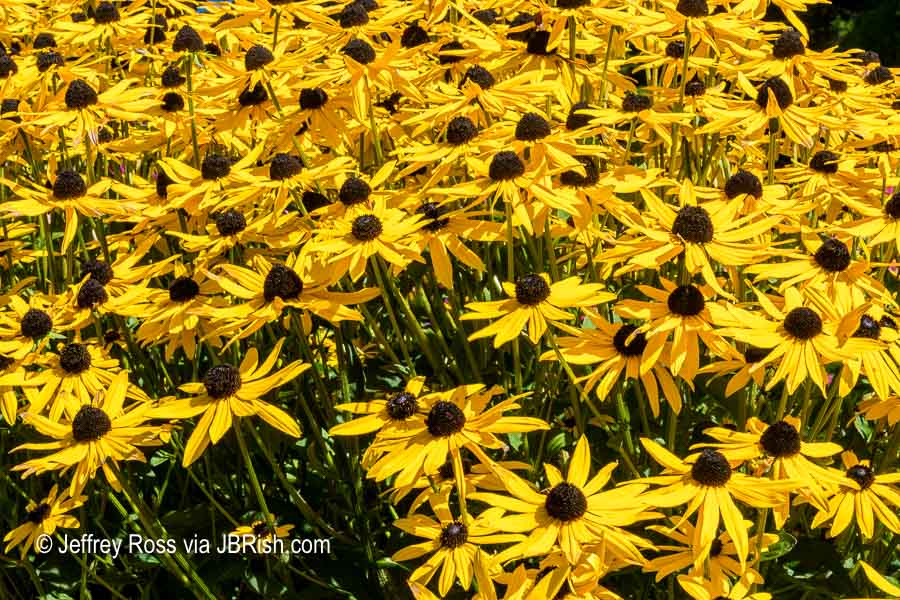
Dahlias have always been one of my favorite flowers because of the intricate petal patterns and nearly unlimited variety in size, color and shape.
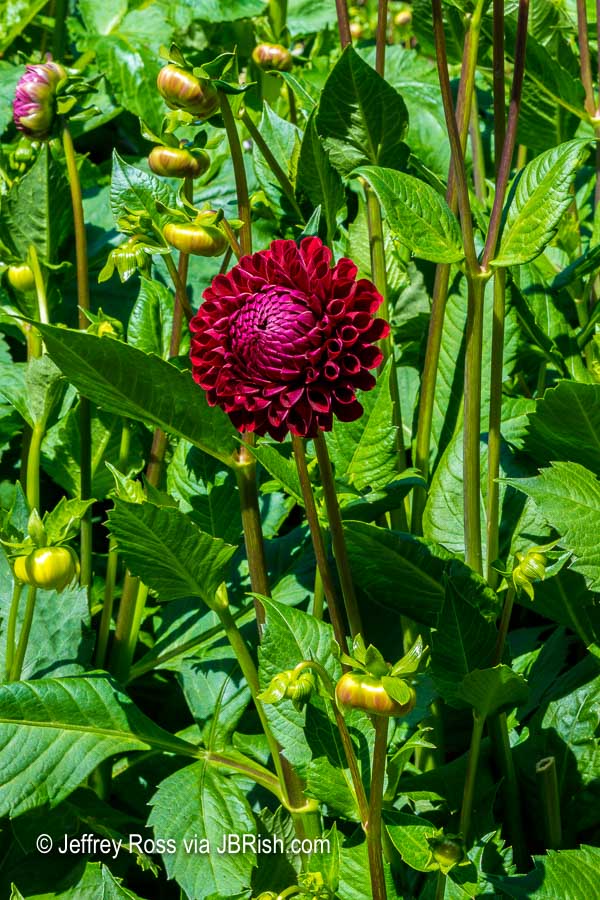
The Hot Poker Plant (Tritoma) was one I have never grown, but these specimens were very colorful placed along the nearby hedge.
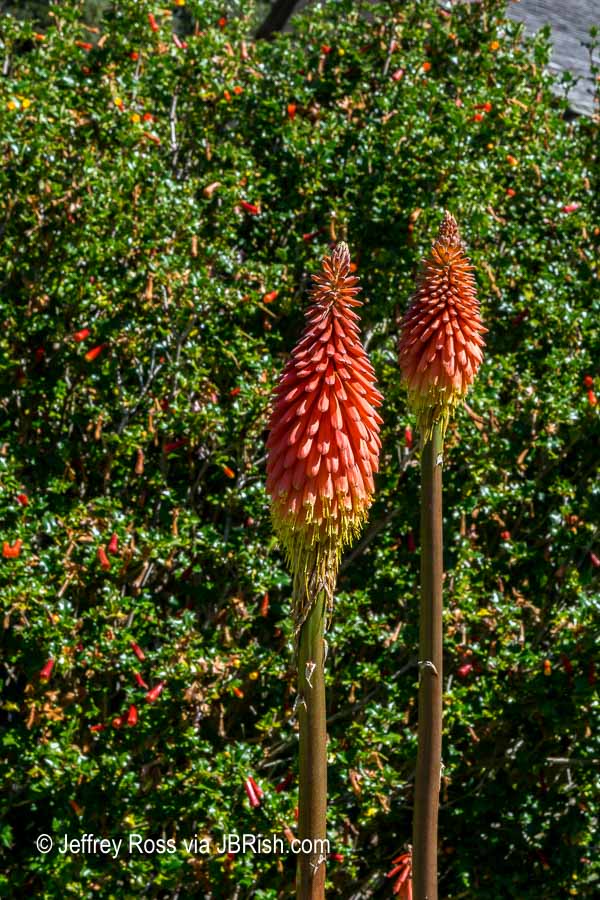
There were a few greenhouses that had open doors and we took advantage of the “invite” and stepped inside. There were baskets of Impatiens, Angel Wing Begonias, Tuberous Begonias, Streptocarpus, Gloxinias and more.

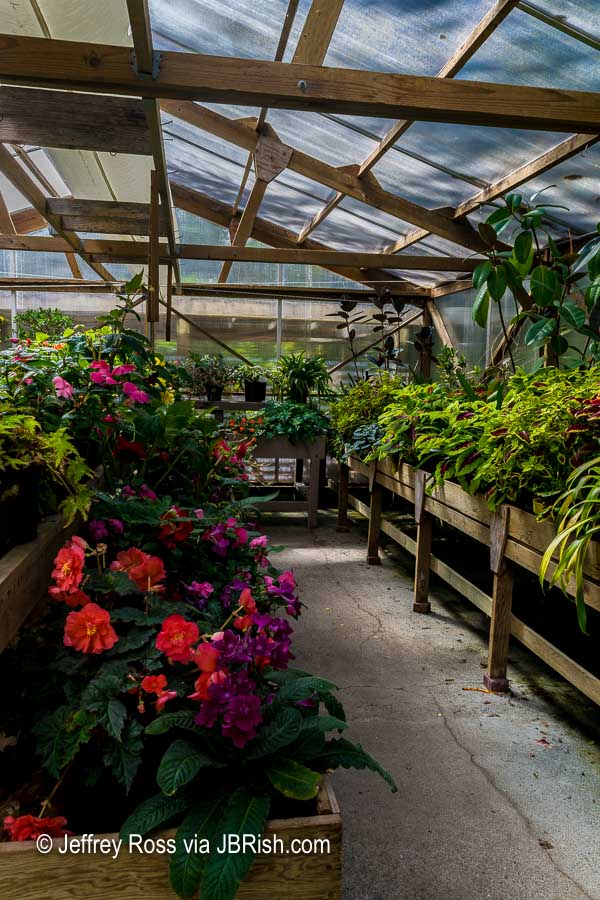
Visitors couldn’t ask for a more exquisite setting. There were an abundance of plants in a manicured and beautifully hardscaped botanical venue.
**********
Read previous posts about our adventures hiking and exploring in Oregon:
Exploring Astoria, Oregon – Part 1
Exploring Astoria, Oregon – Part 2
Exploring Astoria, Oregon – Part 3
Adventures in Oregon: Warrenton to Seaside
Adventures in Oregon: Hiking at Indian Beach
Adventures in Oregon: Views from Ecola Point
Adventures in Oregon: Movin’ On Down the Road
Adventures in Oregon: Garibaldi’s Graces and Pier
Adventures in Oregon: Tillamook – Cape Meares Lighthouse
Adventures in Oregon: Pacific City, Neskowin & Lincoln City
Adventures in Oregon: Cascade Head and Hart’s Cove in Lincoln City
Adventures in Oregon: Cape Foulweather & Drift Creek Falls
Adventures in Oregon: Newport to Yachats
Adventures in Oregon: Heceta Head & Sand Dunes
Read more Hiking and Exploration posts HERE
**********
All original content on this blog is copyrighted by Jeffrey B. Ross with ALL Rights Reserved. While reference links back to JBRish.com are appreciated and encouraged, please acquire approval for any reproduction of original content from this website.
©Jeffrey B. Ross – 2018 – JBRish.com
